Forums
- Forums
- Axis And Allies Forum
- General Discussion
- Aviation News
Aviation News
Post a reply
- Go to Next topic
- Go to Welcome
- Go to Introduce Yourself
- Go to General Discussion
- Go to Screenshots, Images and Videos
- Go to Off topic
- Go to Works in Progress
- Go to Skinning Tips / Tutorials
- Go to Skin Requests
- Go to IJAAF Library
- Go to Luftwaffe Library
- Go to RAF Library
- Go to USAAF / USN Library
- Go to Misc Library
- Go to The Ops Room
- Go to Made in Germany
- Go to Campaigns and Missions
- Go to Works in Progress
- Go to Juri's Air-Raid Shelter
- Go to Campaigns and Missions
- Go to Works in Progress
- Go to Skinpacks
- Go to External Projects Discussion
- Go to Books & Resources
-
 Main AdminMISAWA, Japan (Jan. 5, 2017) Sailors from Patrol Squadron (VP) 10 de-ice a P-8A Poseidon patrol and reconnaissance aircraft after a snowstorm at Misawa Airbase. (U.S. Navy Photo by Mass Communication Specialist 2nd Class Samuel Weldin/Released)
Main AdminMISAWA, Japan (Jan. 5, 2017) Sailors from Patrol Squadron (VP) 10 de-ice a P-8A Poseidon patrol and reconnaissance aircraft after a snowstorm at Misawa Airbase. (U.S. Navy Photo by Mass Communication Specialist 2nd Class Samuel Weldin/Released)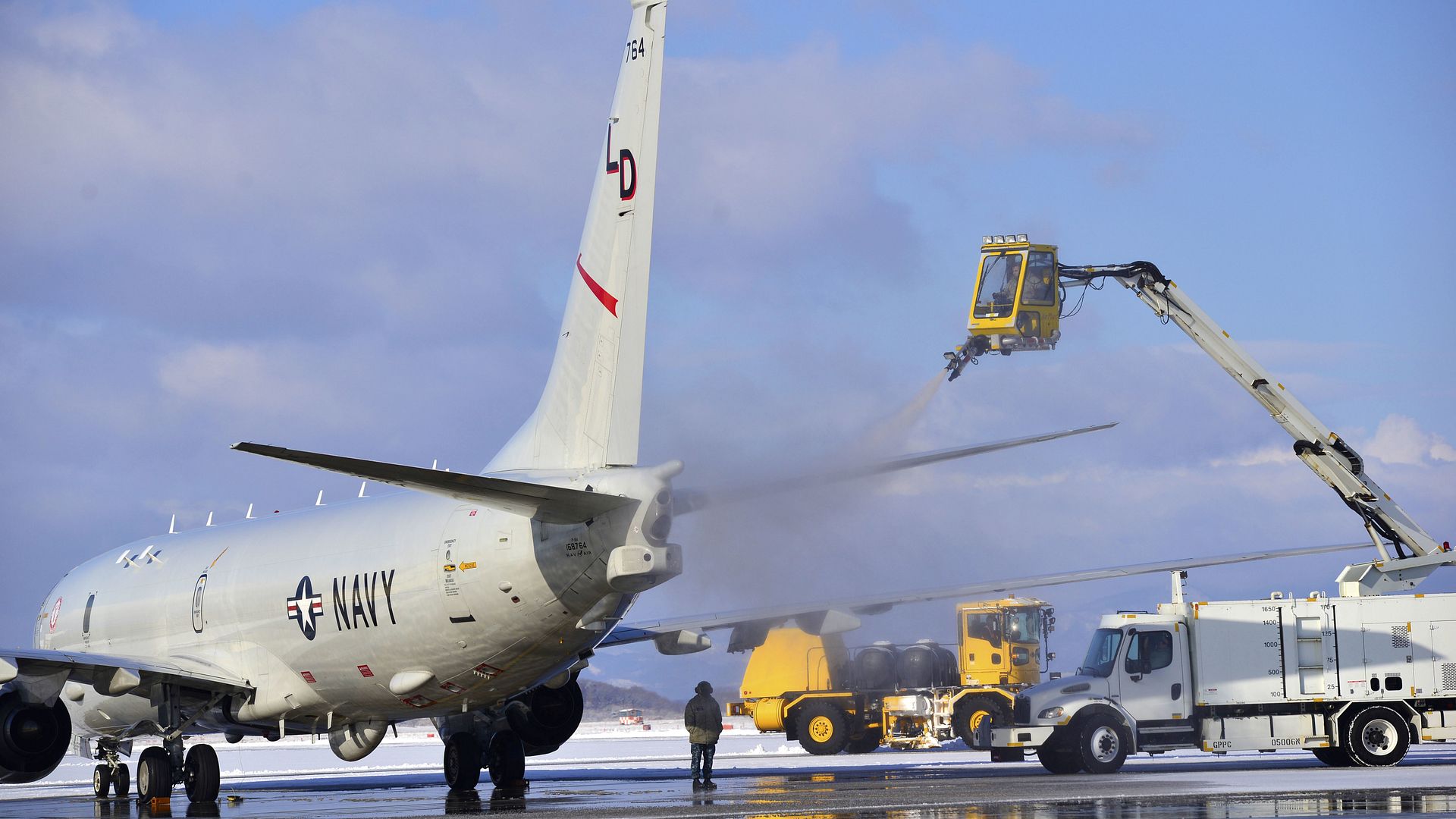
An F/A-18D Hornet with Marine All-Weather Fighter Attack Squadron (VMFA) 225 taxis down the runway at Marine Corps Air Station Iwakuni, Japan, Jan. 5, 2017. VMFA(AW) 225 is forward deployed to MCAS Iwakuni on a six month rotation with the Unit Deployment Program to improve operational capabilities through training in the Pacific region. (U.S. Marine Corps photo by Lance Cpl. Joseph Abrego)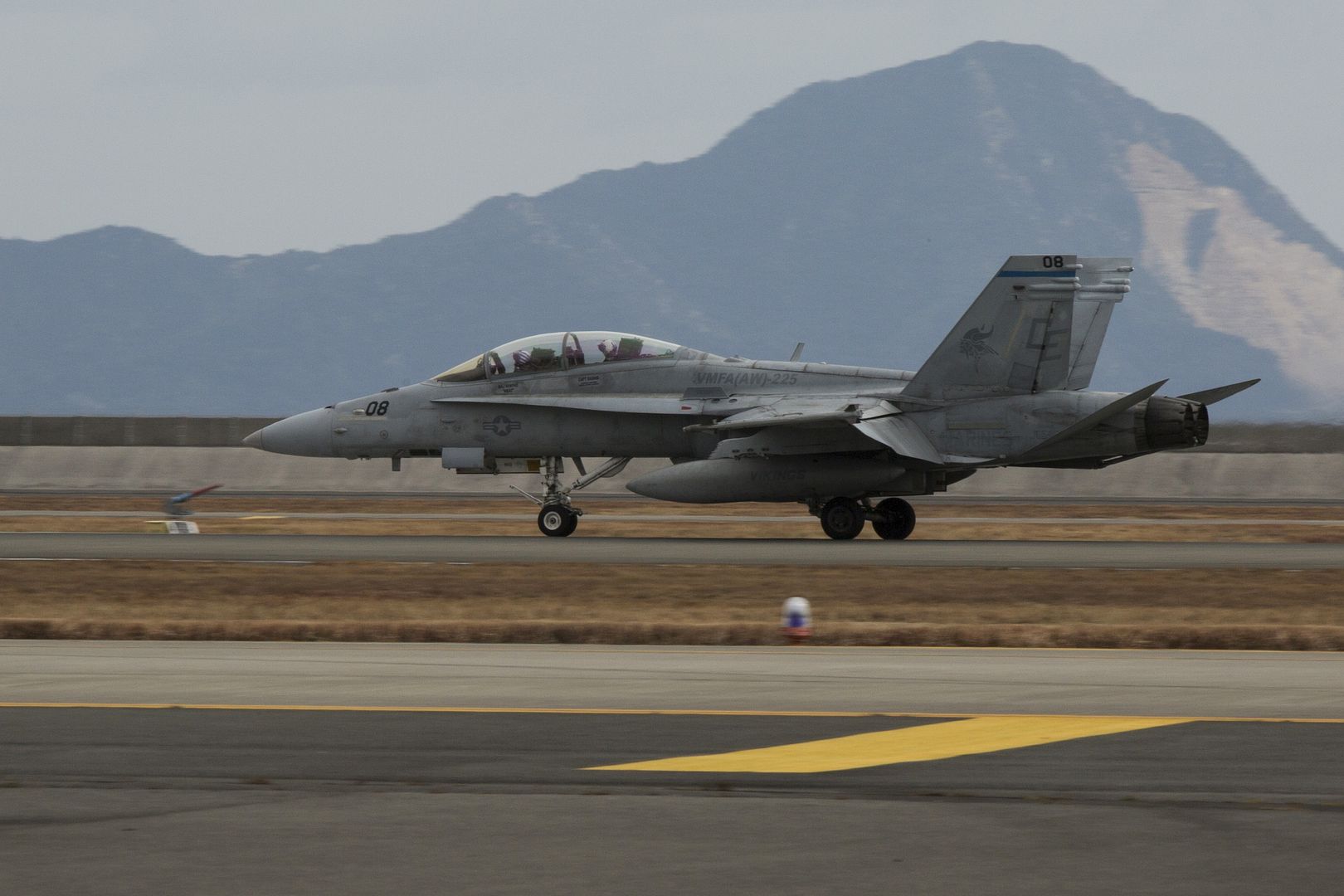
SEATTLE, Jan. 4, 2017 ? Boeing (NYSE: BA) and GE Capital Aviation Services (GECAS), the commercial aircraft leasing and financing arm of General Electric (NYSE: GE), announced today an order for 75 737 MAX 8 airplanes.
The order, booked in December, is valued at $8.25 billion at current list prices. The follow-on order increases the GECAS firm order book for the 737 MAX to 170 airplanes, the largest of any aircraft leasing company.
?These new orders will enable GECAS to serve our clients? needs ? assisting in managing their fleets, transitioning aircraft and providing new equipment,? said Alec Burger, President and Chief Executive Officer, GECAS. ?Our customers want the latest technology and fuel efficiency, and the CFM International LEAP-1B engines on these aircraft deliver outstanding productivity and reliability in the single-aisle market.?
?When it comes to demand, this order shows the MAX 8 remains at the heart of the single-aisle market,? said Brad McMullen, vice president, North America and Leasing Sales, Boeing Commercial Airplanes. ?We appreciate the confidence GECAS has in the 737 MAX, and look forward to seeing the airplanes placed with carriers all over the world.?
To date, the 737 MAX has accumulated 3,419 orders, making it the fastest-selling airplane in Boeing history.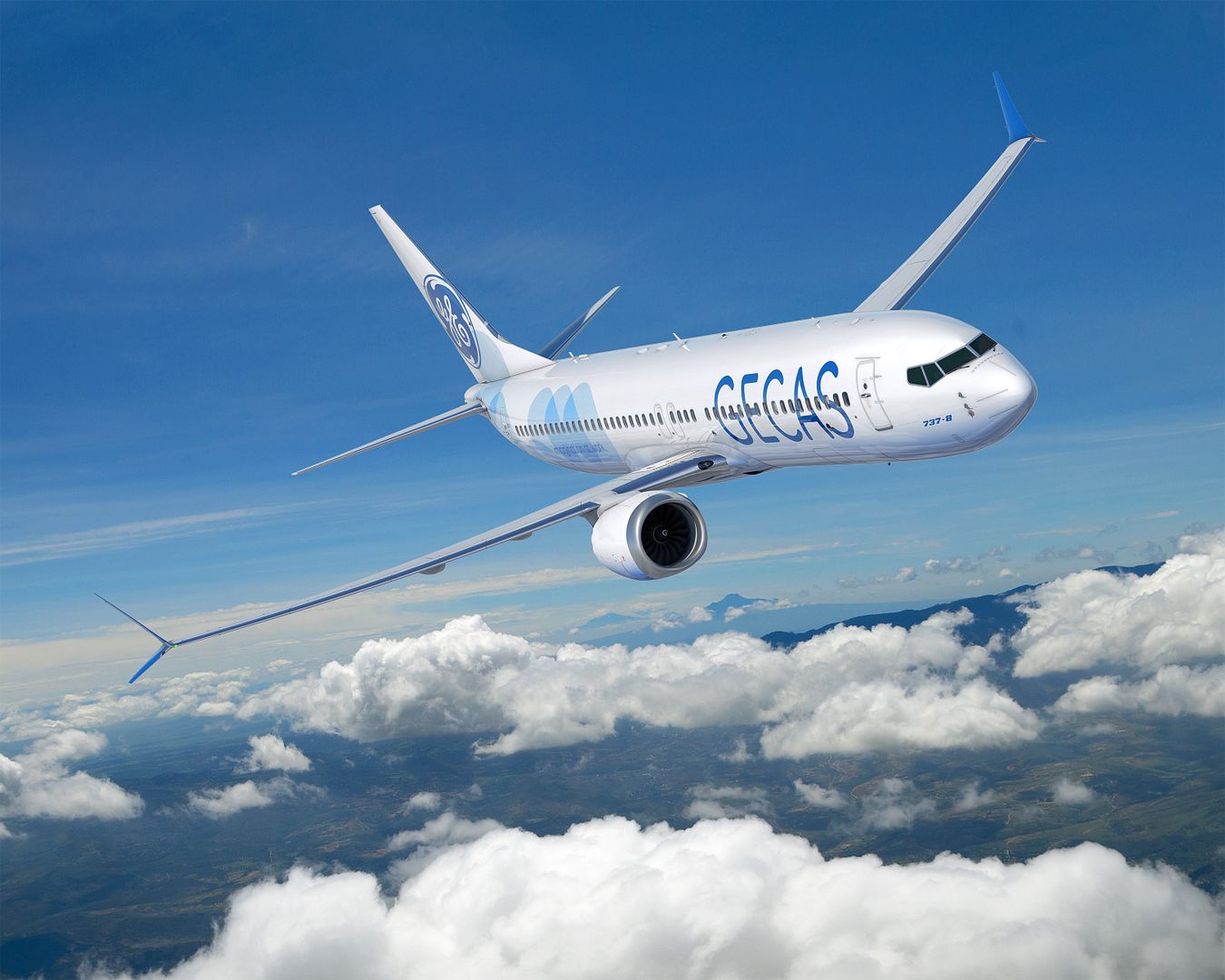
PRAGUE, Jan. 4, 2017 ? Boeing (NYSE: BA) and Travel Service, the Czech airline company that operates scheduled flights under the SmartWings brand, has finalized an order for five 737 8 MAX airplanes, valued at $550 million at current list prices.
Travel Service previously placed an order for three 737 MAXs at the Paris Air Show in 2013 and currently operates a mixed fleet that includes 32 737s.
"We are pleased to add more 737 MAXs to our original order and we look forward to receiving the first one to become the first airline to operate the 737 MAX in this region," said Roman Vik, Chief Executive Officer, Travel Service.
The 737 MAX incorporates the latest technology CFM International LEAP-1B engines, Advanced Technology winglets and other improvements to deliver the highest efficiency, reliability and passenger comfort in the single-aisle market.
The 737 MAX will be 14 percent more fuel-efficient than today's most efficient Next-Generation 737s ? and 20 percent better than the original Next-Generation 737s when they first entered service.
"We are delighted that Travel Service continues to place its faith in our products with this new, increased order for the 737 MAX,? said Monty Oliver, Vice President, European Sales, Boeing Commercial Airplanes. "This airplane will be a great addition to its fleet providing the airline with unmatched fuel efficiency and its passengers with superior comfort.?
Travel Service is the largest Czech airline company, operating regular flights under the SmartWings brand, charter flights and private flights in the Business Jet category. Travel Service planes are flying to more than 300 airports on 4 continents. Travel Service is present on market not only in the Czech Republic but also in Slovakia, Poland and Hungary, where the company has its subsidiary companies.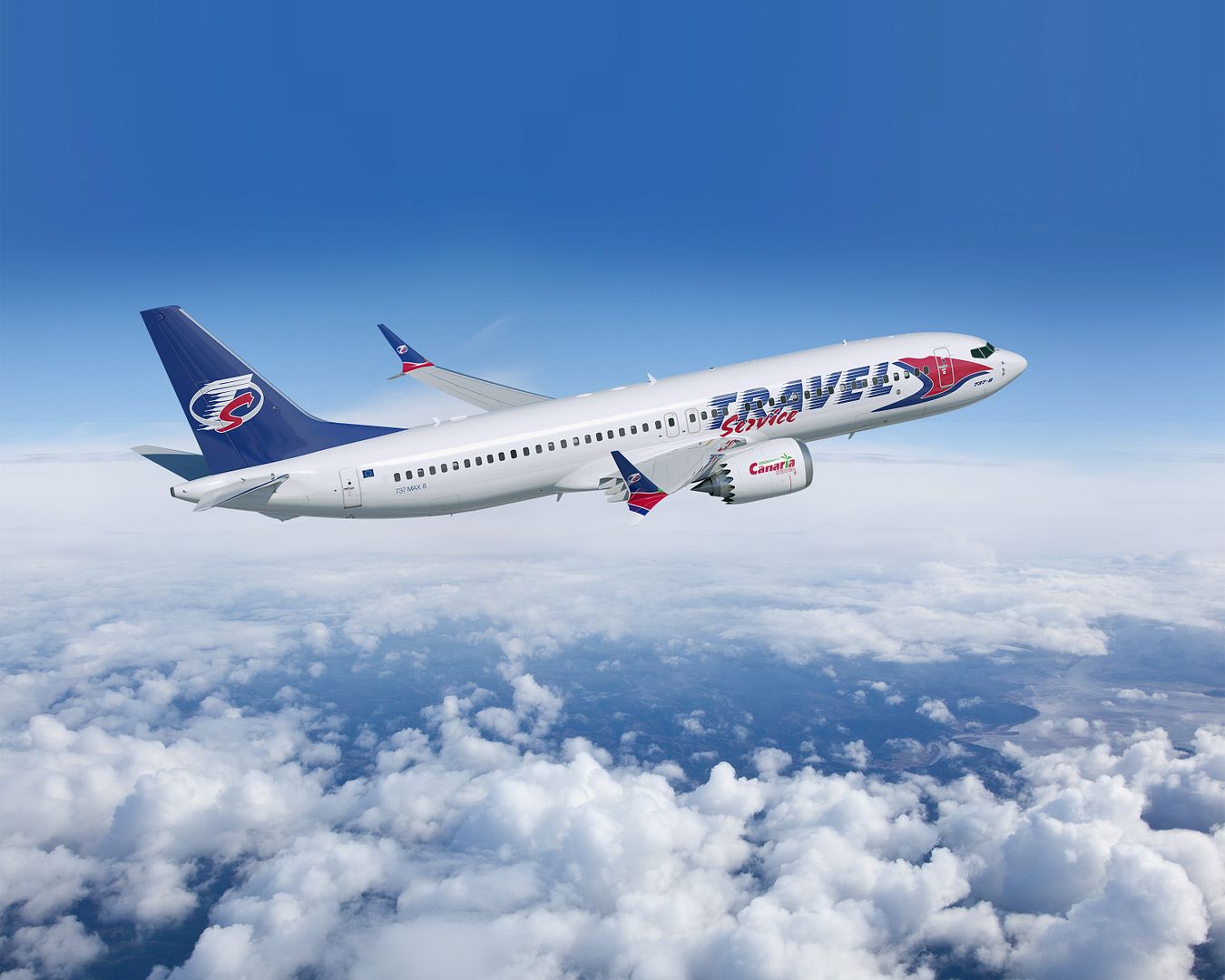
The renewed counter-Daesh offensive to liberate Mosul in Iraq, coupled with the advance of forces in Syria, has resulted in a busy period for Royal Air Force aircraft, providing close air support and intelligence, surveillance and reconnaissance activity as part of the coalition air campaign.
Thursday 29 December ? Tornados and a Reaper struck five Daesh targets in Mosul, with the Tornados also destroying an artillery weapons north of Palmyra in Syria.
Friday 30 December ? A Reaper engaged two groups of terrorists engaged in combat with Iraqi forces inside Mosul.
Sunday 1 January ? Typhoons attacked a mortar position in northern Mosul, whilst a Reaper hit terrorist fighters and an armed truck in the south-east of the city.
Monday 2 January ? A British soldier was killed in a non-combat incident at a training base in Taji. Over Mosul, a Reaper engaged a terrorist position.
Tuesday 3 January ? Tornados destroyed a truck south of Kirkuk, a Reaper attacked terrorists in south-east Mosul.
-
 Main AdminU.S. Air Force Senior Airman Jordan Kaminski, a 340th Expeditionary Air Refueling Squadron KC-135 Stratotanker boom operator, refuels a RC-135 Rivet Joint during an Operation Freedom?s Sentinel mission over Afghanistan, Jan. 3, 2017. The 340th EARS is actively engaged in tactical refueling operations which extend kinetic and non-kinetic capabilities across Southwest Asia. (U.S. Air Force photo by Staff Sgt. Matthew B. Fredericks)
Main AdminU.S. Air Force Senior Airman Jordan Kaminski, a 340th Expeditionary Air Refueling Squadron KC-135 Stratotanker boom operator, refuels a RC-135 Rivet Joint during an Operation Freedom?s Sentinel mission over Afghanistan, Jan. 3, 2017. The 340th EARS is actively engaged in tactical refueling operations which extend kinetic and non-kinetic capabilities across Southwest Asia. (U.S. Air Force photo by Staff Sgt. Matthew B. Fredericks)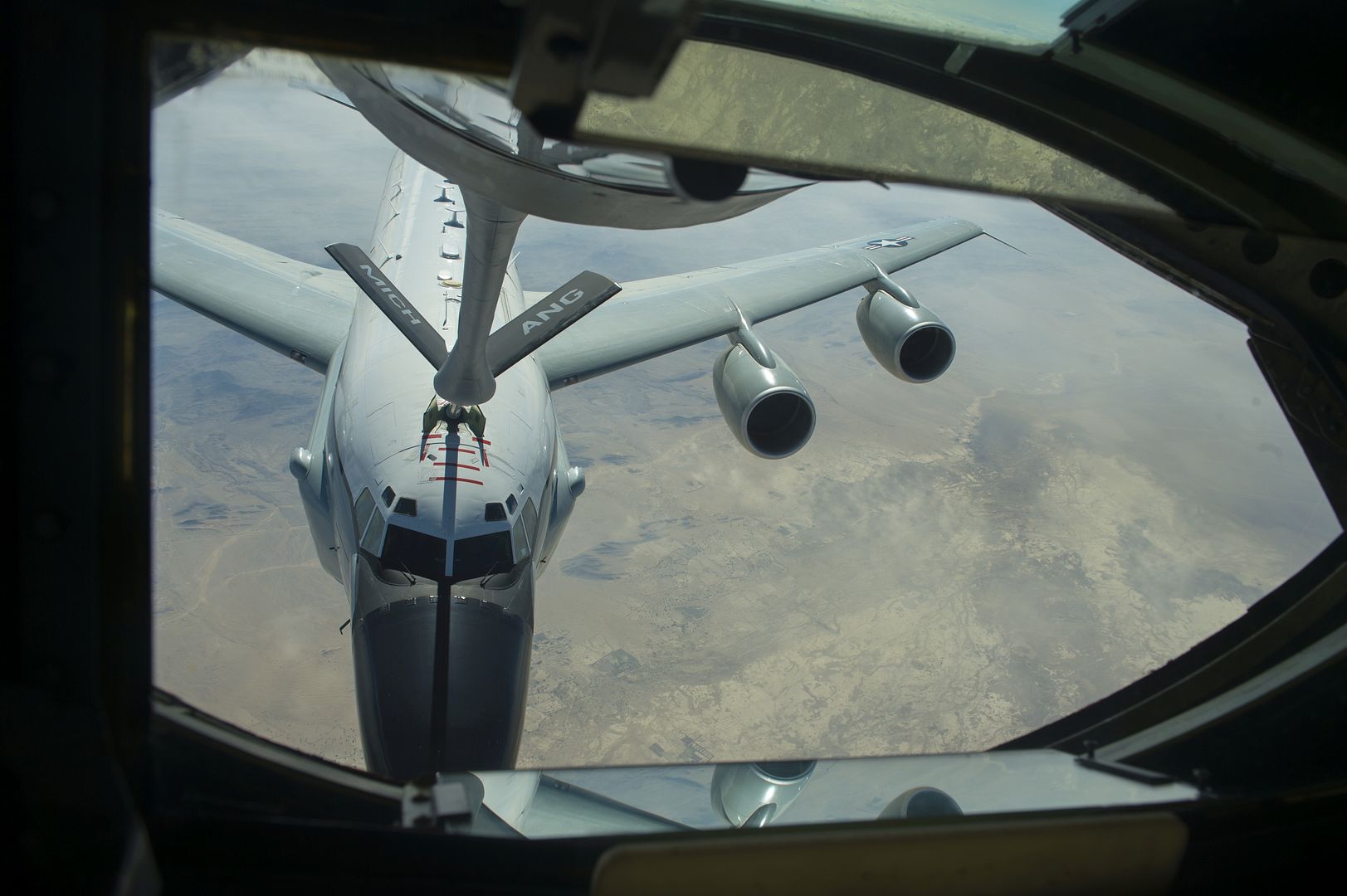
U.S. Air Force Airmen from the 67th Aircraft Maintenance Unit load an AIM-120 Advanced Medium Range Air-to-Air Missile onto an F-15 Eagle Jan. 4, 2017, at Kadena Air Base, Japan. Weapons load crew members have to rush against the clock while using proper loading procedures to ensure secure connections of the missiles onto the F-15 Eagle. (U.S. Air Force photo by Senior Airman Lynette M. Rolen/Released)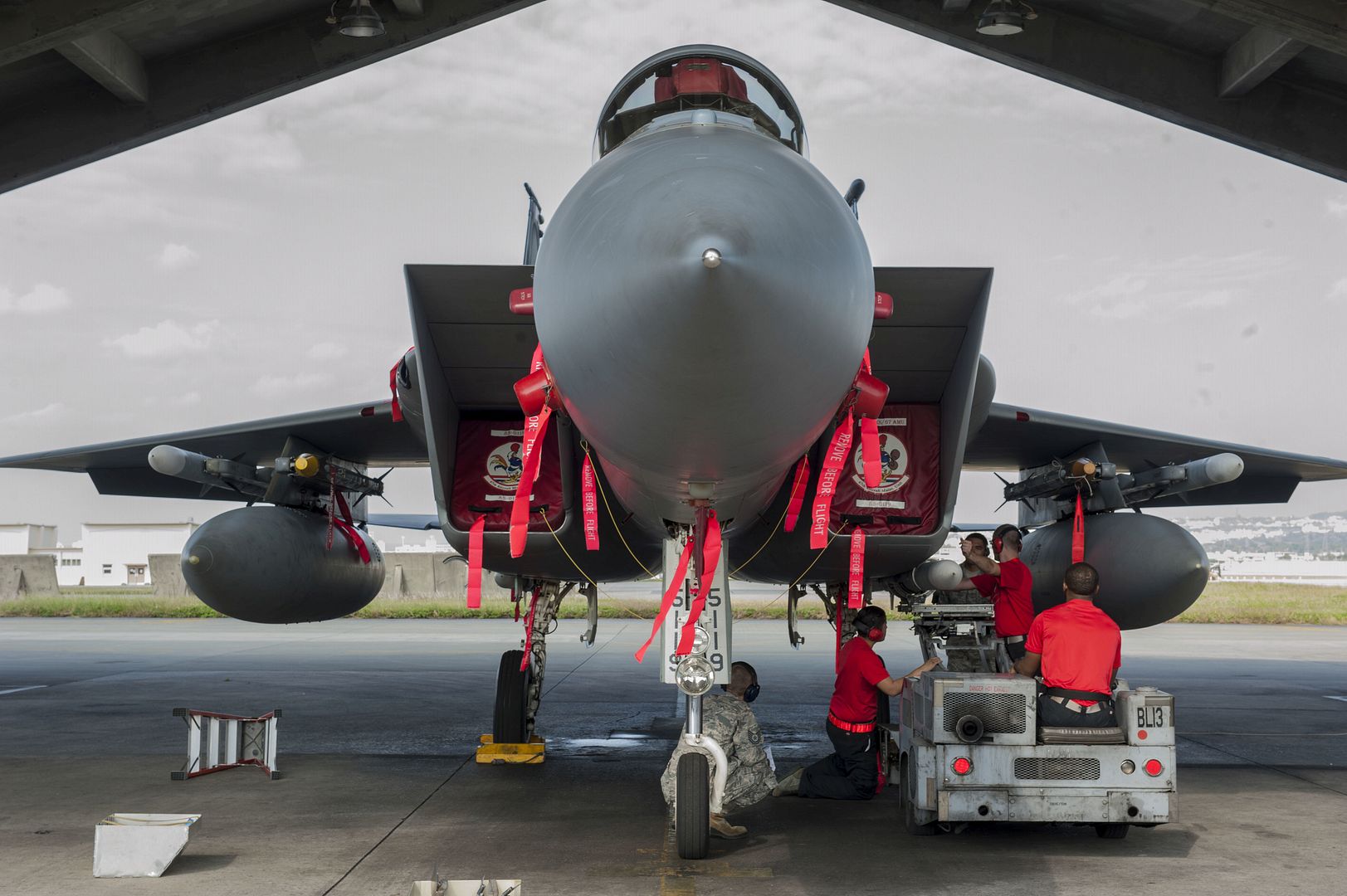
-
 Main AdminDAVIS-MONTHAN AIR FORCE BASE, Ariz. -- A-10C Thunderbolt IIs assigned to active duty fighter squadrons here are in the process of having new lightweight airborne recovery systems installed.
Main AdminDAVIS-MONTHAN AIR FORCE BASE, Ariz. -- A-10C Thunderbolt IIs assigned to active duty fighter squadrons here are in the process of having new lightweight airborne recovery systems installed.
The LARS V-12 is designed to allow A-10 pilots to communicate more effectively with individuals on the ground such as downed pilots, pararescuemen and joint terminal attack controllers.
The LARS system provides the A-10 pilots with GPS coordinates of ground personnel and enables them to communicate via voice or text, according to Staff Sgt. Andre Gonzalez, 355th Aircraft Maintenance Squadron avionics technician.
The systems upgrades are being installed by the 309th Aircraft Maintenance and Regeneration Group.
"This urgent operational need arose in August (2016)," said Timothy Gray, 309th AMARG acting director. "Air Combat Command and the A-10 Program Office asked me if AMARG could complete 16 aircraft by 16 December. I said 'Absolutely!' It was awesome to see Team AMARG take on this massive logistical challenge, build a production machine, find facilities, manpower, equipment, tools, and make material kits (to) execute the requirement."
In the last three months, the technicians have completed LARS installations on 19 aircraft from Davis-Monthan and Moody AFB, Ga., which will ultimately provide pilots and ground personnel downrange with a valuable search capability.
?A-10 pilots take the Combat Search and Rescue role very seriously,? said Lt. Col. Ryan Hayde, 354th Fighter Squadron commander and A-10 pilot. ?While this is just one tool, it can assist us in bringing them back to U.S. soil safely.?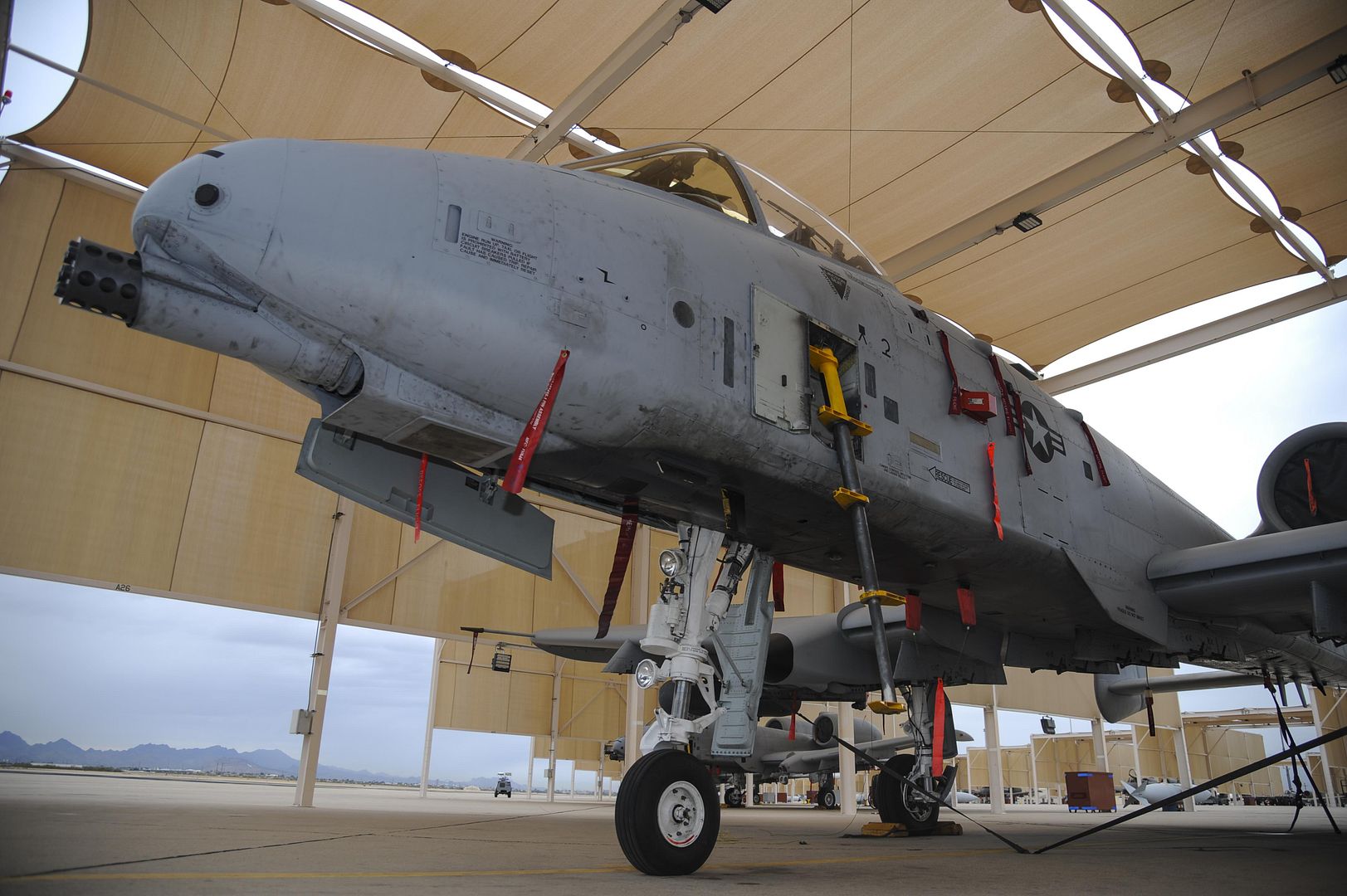
06 January 2017
A huge ?410M investment to jobs at RAF Brize Norton was announced yesterday. The in-service support contract will sustain around 200 UK jobs with Airbus Defence and Space, focused around RAF Brize Norton in Oxfordshire.
More widely, the Atlas programme has a far-reaching UK supply chain, with around 200 additional jobs sustained at companies in: Gloucestershire, Somerset and Sussex, including Messier Dowty in Gloucester, and Thales in Crawley and GKN and Rolls Royce in and around Bristol.
The A400M Atlas is the latest addition to RAF Brize Norton?s tactical airlifter capability and can carry up to 37 tonnes of payload over a range of 2000 nautical miles. It is able to deploy troops and equipment between and within theatres of operation either by parachute or by landing on short, potentially unprepared airstrips. Atlas can also carry armoured vehicles, allowing a deploying force to arrive ready to fight. For humanitarian roles, it is capable of deploying mobile cranes, excavators and large dump trucks for disaster relief operations? for example clearing earthquake sites. The RAF currently has 12 Atlas aircraft in service, with the planned fleet of 22 scheduled to enter service by 2019.
Minister for Defence Procurement Harriett Baldwin said:
?The Atlas programme is delivering a world-class transport aircraft for Britain?s world-class armed forces and sustaining hundreds of high-skilled jobs across the UK.
?With a rising defence budget and ?178 billion ten-year investment plan, Britain is delivering the equipment that our armed forces need as the UK steps up across the globe.?
RAF Brize Norton?s Station commander, Group Captain Tim Jones said:
?This contract marks a statement of intent that RAF Brize Norton is the base for Air Transport for the foreseeable future and we are here to make a long term investment.
?It will support many jobs at Brize Norton and Oxfordshire and even beyond to Bristol and Gloucester?
The new contracts come after the delivery of important training systems to the RAF, including two cockpit simulators and a cargo hold trainer. The new training equipment at RAF Brize Norton has a combined value of ?141 million and is supported through a pre-existing service support contract worth ?226 million.
The second of two flight simulators and a cargo hold trainer were delivered earlier in 2016 and the facilities will provide training activities for up to 60 flight crews, and 60 maintenance personnel a year.
Elsewhere on site, a new, innovative hangar facility worth around ?62 million is on schedule to be fully fitted-out by early 2017. This huge building is capable of housing three Atlas aircraft during maintenance periods.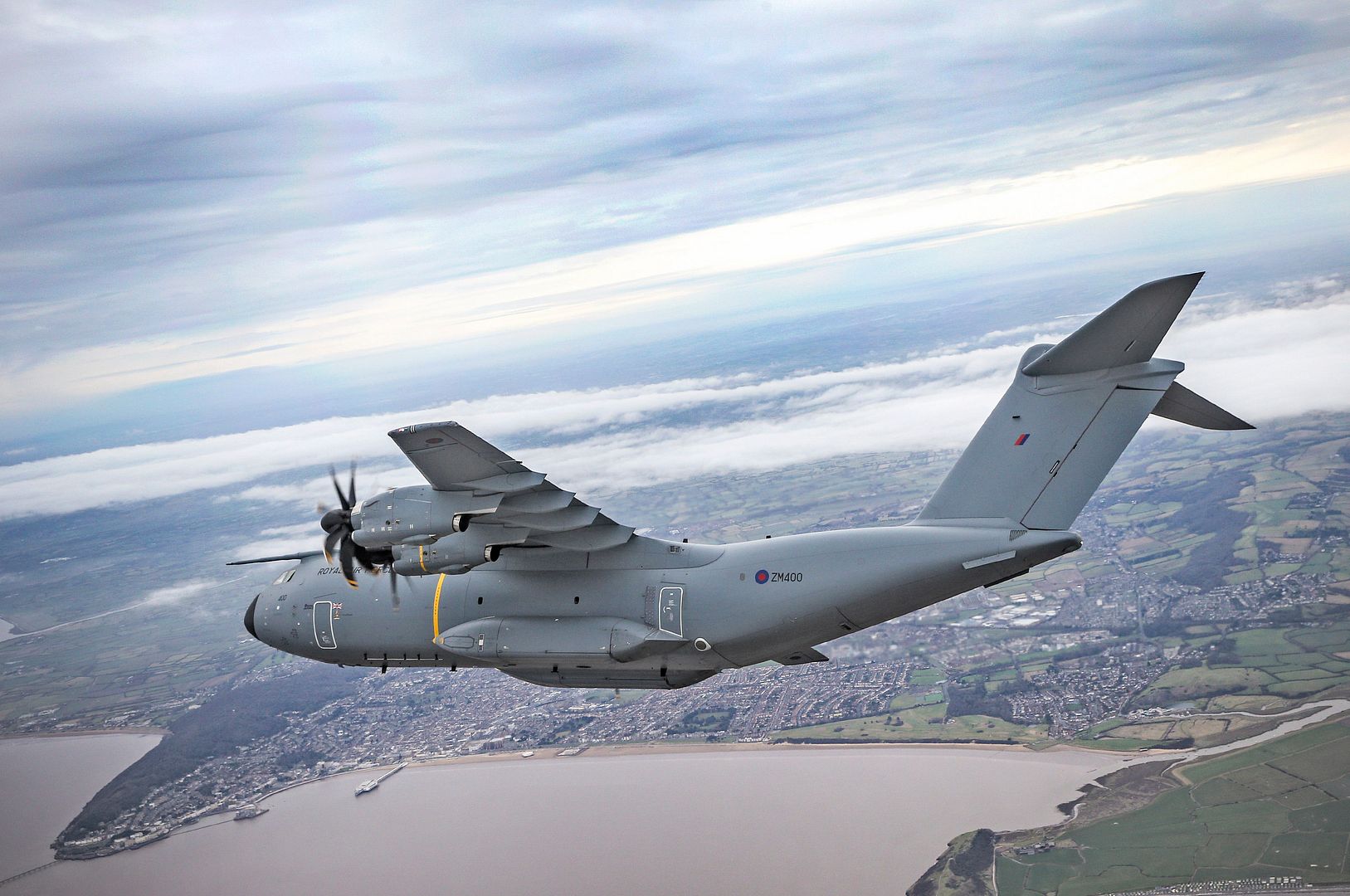
-
 Main AdminKC-135R Stratotankers with the 459th Air Refueling Wing rest on the Joint Base Andrews, Maryland, flight line during the region's first winter storm of the season Jan. 8, 2017. Up to two inches fell in parts of the National Capital Region during the 459th's drill weekend. (U.S. Air Force photo/Tech. Sgt. Kat Justen)
Main AdminKC-135R Stratotankers with the 459th Air Refueling Wing rest on the Joint Base Andrews, Maryland, flight line during the region's first winter storm of the season Jan. 8, 2017. Up to two inches fell in parts of the National Capital Region during the 459th's drill weekend. (U.S. Air Force photo/Tech. Sgt. Kat Justen)
Taipei, January 10th 2017 - Airbus has signed a Memorandum of Understanding (MoU) with China Airlines (CAL) to support the development of the airline?s maintenance, engineering and technical training capabilities in Taiwan. Under the MoU, Airbus and CAL will evaluate technical and business solutions to develop the carrier?s services for all Airbus aircraft types currently operated by the airline, which include the A350 XWB, A330/A340, and A320 families.
The companies will also jointly evaluate and promote CAL?s retrofit activities and cabin and airframe modifications, the feasibility of approving the airline?s maintenance training centre and developing its maintenance training capabilities in Taiwan ranging from ab-initio programmes to courses for mechanics. In addition, they will evaluate the benefits of Satair Group and other Airbus affiliates becoming key parts providers for CAL.
Ho Nuan-Hsuan, Chairman of China Airlines, said: ?We are delighted to sign this cooperation MoU with Airbus, which bodes well for enhancing aviation industry capabilities in Taiwan for the Asia-Pacific region. Through Airbus? valuable industry know-how, China Airlines and our associated TAMECO maintenance subsidiary are looking forward to accelerating our maintenance and engineering capabilities for the major Airbus aircraft types, including the newly introduced A350 XWB.?
Jean-Francois Laval, Airbus Executive Vice President, Customer Affairs, Asia, added: ?Airbus is committed to providing the best products and services solutions to China Airlines for its business success, enhancing its capabilities in areas such as MRO and training. Airbus is very pleased to support China Airlines in developing its own commercial aviation related business in Taiwan.?
Airbus has enjoyed a long association with China Airlines, dating back almost four decades. The latest milestone in this relationship was celebrated in September 2016 when the airline took delivery of its first A350 XWB. The carrier now has four A350-900s in service, with 10 more on order for future delivery.
News Article / January 9, 2017
By Jeff Gaye
The initial planning conference for the 50th Maple Flag exercise was held at 4 Wing Cold Lake, Alberta, during the first week of December.
The stage is set for the spring 2017 exercise, said Major Chris Horch, who commands the Air Force Tactical Training Centre at 4 Wing. ?At our initial brief, we gave [the international participants] an idea of the different [flying] rules we have in Canada compared to other countries. We gave them a general overview brief of what the base offers.
?After the initial briefs,? he continued, ?we had what we call the booth bay, with businesses from town that are involved in supporting Maple Flag. Rental car companies, hotels, other leisure companies as well.?
The exercise will run in two periods of two weeks each, beginning May 29 and ending June 23.
The first period will involve primarily Royal Canadian Air Force aircraft, including CF-188 Hornet fighters from 4 Wing and from 3 Wing Bagotville, Quebec. As well, four CH-146 Griffon and two CH-147F Chinook helicopters, and a CC-130J Hercules transport aircraft, will take part. France and the United States are each scheduled to fly an E3 Sentry AWACS (Airborne Warning and Control System) aircraft in period 1, and France plans to fly its Airbus A400M tactical airlift aircraft.
Belgian, Canadian, French and German ground troops will participate in the exercise, while the United States Marine Corps will provide logistical support.
Period 2 will involve a greater emphasis on international fighter forces. The RCAF will fly CF-188s from 4 Wing squadrons. The Republic of Singapore Air Force is slated to bring 10 F-16 Fighting Falcon jets, and the United States Air Force 93rd Expeditionary Fighter Squadron, from Homestead, Florida, plans to contribute 12 F-16s. AWACS are scheduled to be provided by Royal Air Force and USAF E3 Sentry aircraft.
?Red Air?, flying as enemy forces, will be provided by Top Aces Alpha Jets and RCAF CF-188 Hornets.
The International Observer Program, under which potential participants get a sense of the exercise, is another important facet of Maple Flag. So far this year, 12 countries are confirmed as observers, and more may sign on.
Jeff Gaye is an editor/reporter with 4 Wing Cold Lake base newspaper The Courier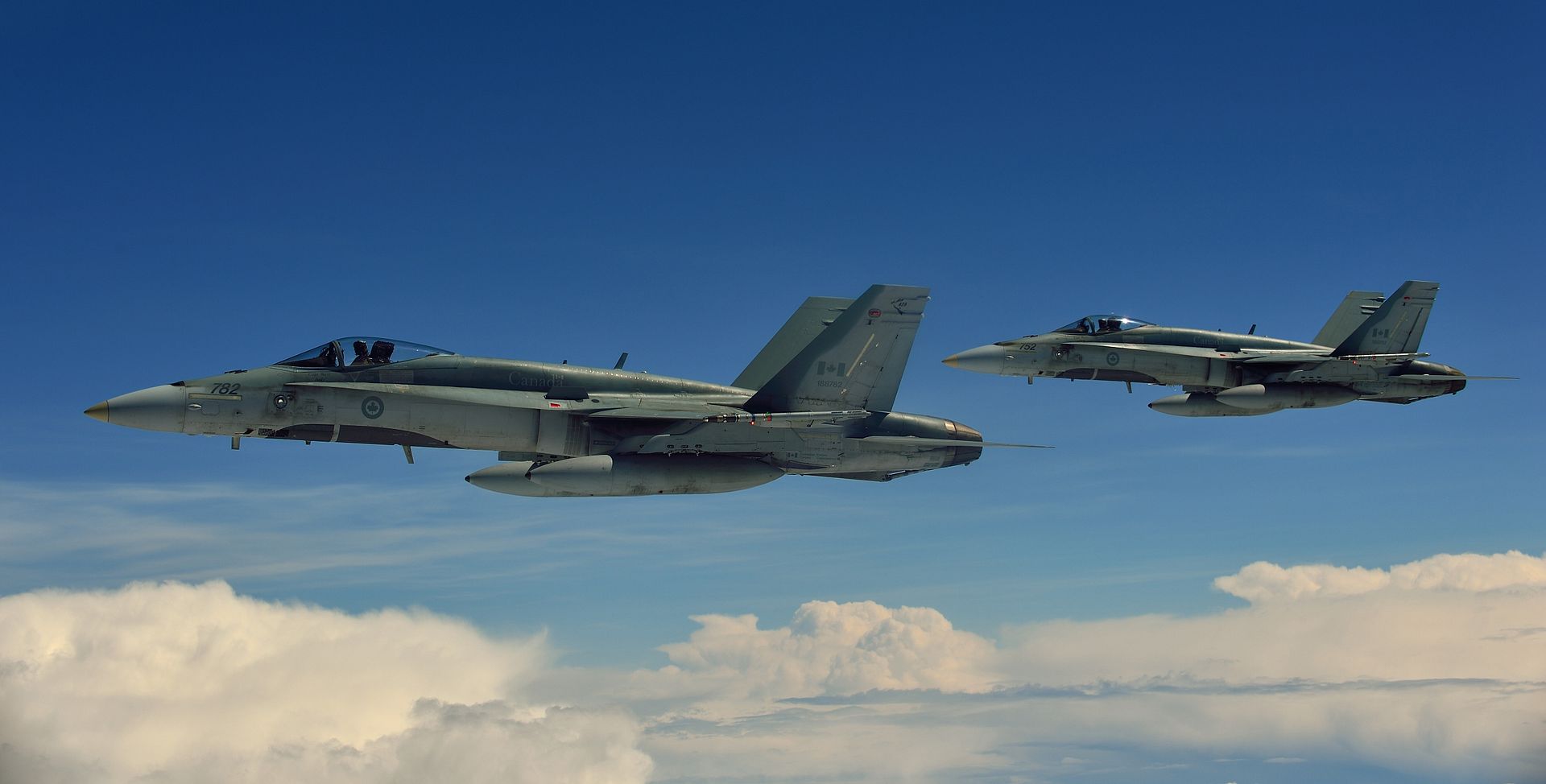
Koninklijke Luchtmacht
120 soldiers with 4 Dutch F-16's take over air policing at an airbase near the Lithuanian Siauliai. They make sure that the airspace of the Baltic States over the next 4 months is guarded.
-
 Main AdminARINE CORPS AIR STATION YUMA, Ariz.?An F-35B lightning II with Marine Fighter Attack Squadron (VMFA) 121 prepares to take off aboard Marine Corps Air Station Yuma, Ariz., Jan. 9, 2017, as it transits the Pacific en route to Marine Corps Air Station Iwakuni, Japan. VMFA-121 is the first operational F-35B squadron assigned to the Fleet Marine Force, with its relocation to 1st Marine Aircraft Wing at Iwakuni. The F-35B was developed to replace the Marine Corps? F/A-18 Hornet, AV-8B Harrier and EA- 6B Prowler. The Short Take-off Vertical Landing (STOVL) aircraft is a true force multiplier. The unique combination of stealth, cutting-edge radar and sensor technology, and electronic warfare systems bring all of the access and lethality capabilities of a fifth-generation fighter, a modern bomber, and an adverse-weather, all-threat environment air support platform. (U.S. Marine Corps photo by Lance Cpl. Jake McClung/Released)
Main AdminARINE CORPS AIR STATION YUMA, Ariz.?An F-35B lightning II with Marine Fighter Attack Squadron (VMFA) 121 prepares to take off aboard Marine Corps Air Station Yuma, Ariz., Jan. 9, 2017, as it transits the Pacific en route to Marine Corps Air Station Iwakuni, Japan. VMFA-121 is the first operational F-35B squadron assigned to the Fleet Marine Force, with its relocation to 1st Marine Aircraft Wing at Iwakuni. The F-35B was developed to replace the Marine Corps? F/A-18 Hornet, AV-8B Harrier and EA- 6B Prowler. The Short Take-off Vertical Landing (STOVL) aircraft is a true force multiplier. The unique combination of stealth, cutting-edge radar and sensor technology, and electronic warfare systems bring all of the access and lethality capabilities of a fifth-generation fighter, a modern bomber, and an adverse-weather, all-threat environment air support platform. (U.S. Marine Corps photo by Lance Cpl. Jake McClung/Released)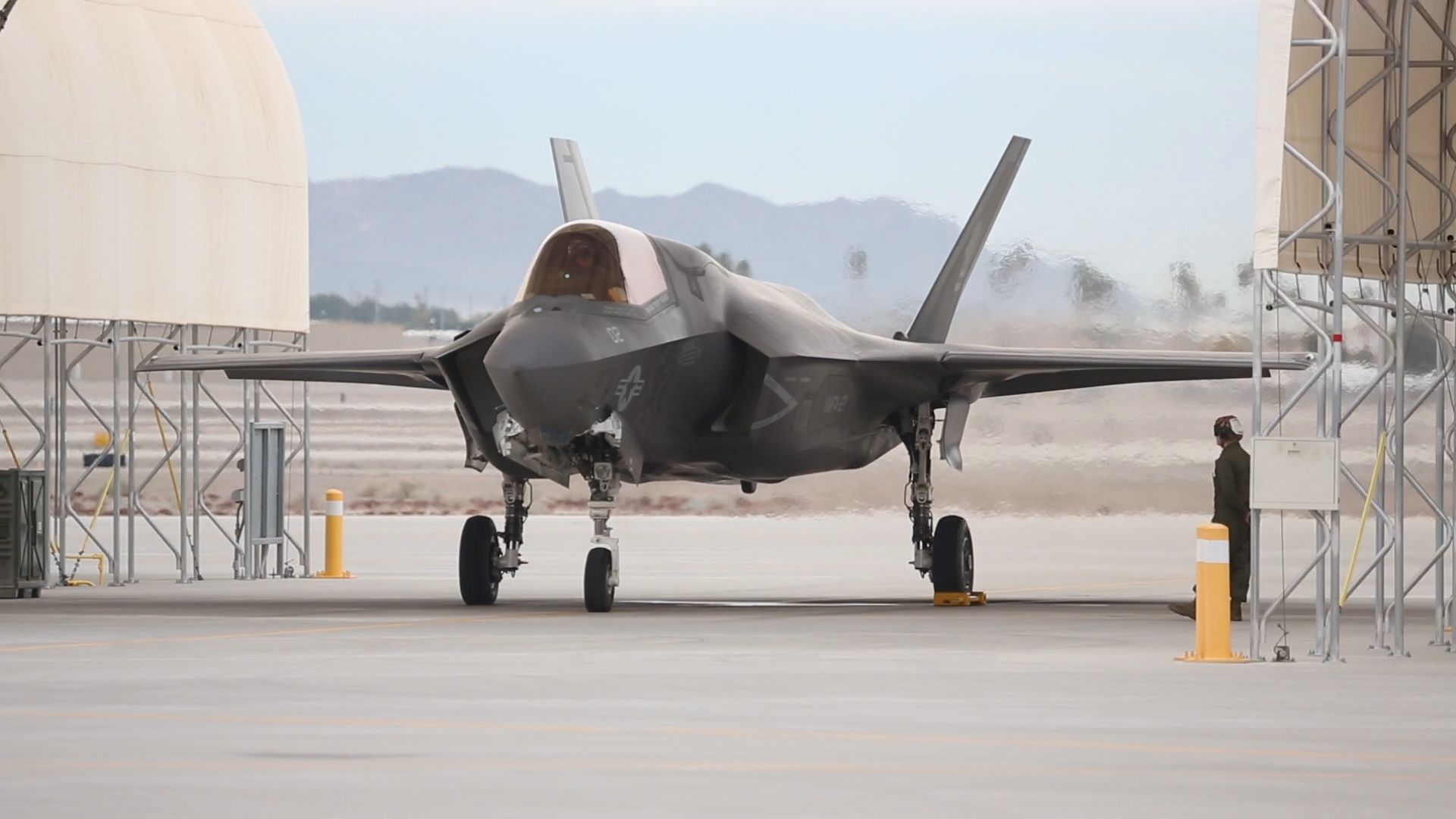
CAPE CANAVERAL AIR FORCE STATION, Fla., Jan. 10, 2017 /PRNewswire/ -- The U.S. Air Force's next Space Based Infrared System (SBIRS) Geosynchronous Earth Orbit (GEO) satellite, built by Lockheed Martin (NYSE: LMT), was encapsulated on Jan. 7 at Cape Canaveral, Florida, where it will launch on Jan. 19 aboard a United Launch Alliance Atlas V rocket. Encapsulation refers to the sealing of the satellite in a protective launch vehicle fairing?one of the last steps a satellite must undergo before launch.
[The SBIRS GEO Flight 3 satellite was encapsulated on Jan. 7. During encapsulation, the molded launch vehicle fairing is moved around the satellite to align flush with the surface of the rocket, ensuring the nose cone is aerodynamically smooth during launch.]
The SBIRS GEO Flight 3 satellite is the latest to join an orbiting network of satellites equipped with powerful scanning and staring sensors that collect and transmit infrared surveillance information to relay ground stations. This information is used by the U.S. military to detect missile launches, support ballistic missile defense, expand technical intelligence gathering and bolster situational awareness on the battlefield. While SBIRS' primary mission is strategic missile warning, infrared data will also be made available for new qualified military and civilian uses at the Air Force's recently opened Tools, Applications and Processing Lab in Boulder, Colorado.
"The satellite's successful delivery and encapsulation closes out a manufacturing process that Lockheed Martin has continued to streamline with each build, driving significant schedule and cost reductions into the SBIRS program," said David Sheridan, vice president of Lockheed Martin's Overhead Persistent Infrared systems mission area. "With its launch, the addition of GEO Flight 3 into the constellation will greatly enhance SBIRS' ability to provide resilient, space-based infrared surveillance capabilities for decades to come."
The satellite's journey to launch began at Lockheed Martin's Sunnyvale, California, facility, where it was built, integrated and thoroughly tested. For its trip to Florida, the satellite was loaded aboard a C-5 Galaxy aircraft at nearby Moffett Federal Air Field.
The next SBIRS satellite, GEO Flight 4, is in storage and will undergo final assembly, integration and test prior to its planned 2017 launch. SBIRS GEO-5 and GEO-6, which are currently in production, incorporate Lockheed Martin's new modernized A2100 spacecraft to dramatically reduce costs and cycle times while increasing the potential to incorporate future advanced sensor suites.
The SBIRS development team is led by the Remote Sensing Systems Directorate at the U.S. Air Force Space and Missile Systems Center, Los Angeles Air Force Base, California. Lockheed Martin Space Systems, Sunnyvale, California, is the SBIRS prime contractor, with Northrop Grumman Aerospace Systems, Azusa, California, as the payload integrator. The 460th Space Wing, Buckley Air Force Base, Colorado, operates the SBIRS system.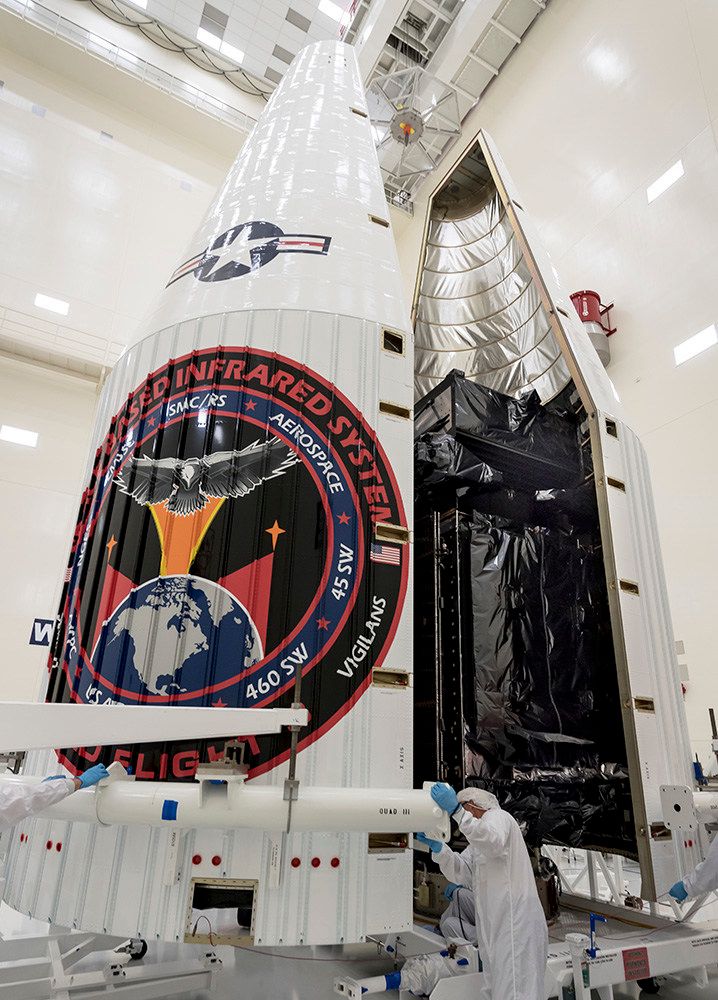
SEATTLE, Jan. 10, 2017 /PRNewswire/ -- Boeing [NYSE: BA] and Jeju Air announced an order today for three Next-Generation 737-800s.
The order, valued at nearly $300 million at current list prices, will become the airline's first direct-purchased airplanes from Boeing and fuel the airline's continued expansion within Asia's rapidly growing air travel market. The order was previously attributed to an unidentified customer on Boeing's Orders & Deliveries website.
"This acquisition is a major step in our growth strategy," said Ken Choi, Chief Executive Officer, Jeju Air. "We fully understand the benefits of owning and operating airplanes, which is what drove our decision to purchase these airplanes. We are confident that this order will enable Jeju Air to further strengthen our position as a leading low-cost carrier in Northeast Asia.
"In addition, the 737 forms the backbone of our fleet and it has been a reliable work-horse for our airline over the past decade," said Choi. "We look forward to introducing these brand new airplanes into our fleet in the near future."
The carrier currently operates an all-Boeing fleet of 26 Next-Generation 737-800s.
"We are honored to partner with Jeju Air as they continue to strengthen their presence in the competitive Northeast Asian market," said Ihssane Mounir, senior vice president, Global Sales and Marketing, Boeing Commercial Airplanes. "This order is a testament of the market-leading efficiency, reliability and passenger comfort of the 737. We look forward to introducing additional 737s to Jeju Air's expanding fleet."
Jeju Air, based in South Korea was established as Korea's first low-cost carrier in 2005 and launched operations in 2006. The carrier currently serves 40 domestic and international routes with approximately 150 daily flights.
The 737-800 is the best-selling version of the highly successful Next-Generation 737 family, which is the world's most popular airplane. Jeju Air's new 737 will feature the Boeing Sky Interior, the 787 Dreamliner inspired cabin, providing passengers a greater sense of spaciousness with decorative sculpted sidewalls, larger window reveals, LED mood lighting and larger pivot overhead stowage bins.
11 January 2017 Press Release
Toulouse, 11th January 2017 - GoAir, a Wadia Group company, has penned a firm contract for 72 A320neo aircraft following its Memorandum of Understanding (MoU) signed during the Farnborough International Airshow. The agreement reached on 30th December 2016, doubles GoAir?s firm order book for the aircraft type to 144.
GoAir took delivery of its first A320neo in June 2016 and now operates a fleet of twenty three aircraft. With the NEO induction, Go Air will expand its network and offer fliers better connectivity and continue its growth as one of India?s preferred low-cost airline.
?The A320neo provides the latest technical innovations and unbeatable economics. We are happy to offer our passengers the most modern and comfortable cabins. This new order will further strengthen our network by adding more domestic and international routes in the years to come,? said GoAir Managing Director & CEO, Wolfgang Prock-Schauer.
?We are delighted that GoAir has renewed its confidence in Airbus. The A320neo offers unbeatable operating costs and GoAir?s passengers will continue to enjoy the unrivalled comfort that only Airbus aircraft offer,? said Airbus Commercial Aircraft Chief Operating Officer - Customers, John Leahy. ?By doubling its order to 144 aircraft, GoAir will benefit from a greatly expanded network.?
GoAir was the first airline to use A320neo in the Spaceflex configuration with 186 seats without compromising on passenger leg room and comfort. The A320neo Family incorporates latest technologies including new generation engines and Sharklet wing tip devices, which together deliver more than 15 percent in fuel savings from day one and 20 percent by 2020 with further cabin innovations.
The A320neo Family is the world?s best-selling single aisle product line with over almost 60 percent share of the market. Thanks to their widest cabin, all members of the A320neo Family offer unmatched comfort in all classes and Airbus? 18? wide seats in economy as standard. To date, nine A320neo aircraft have been delivered to three customers.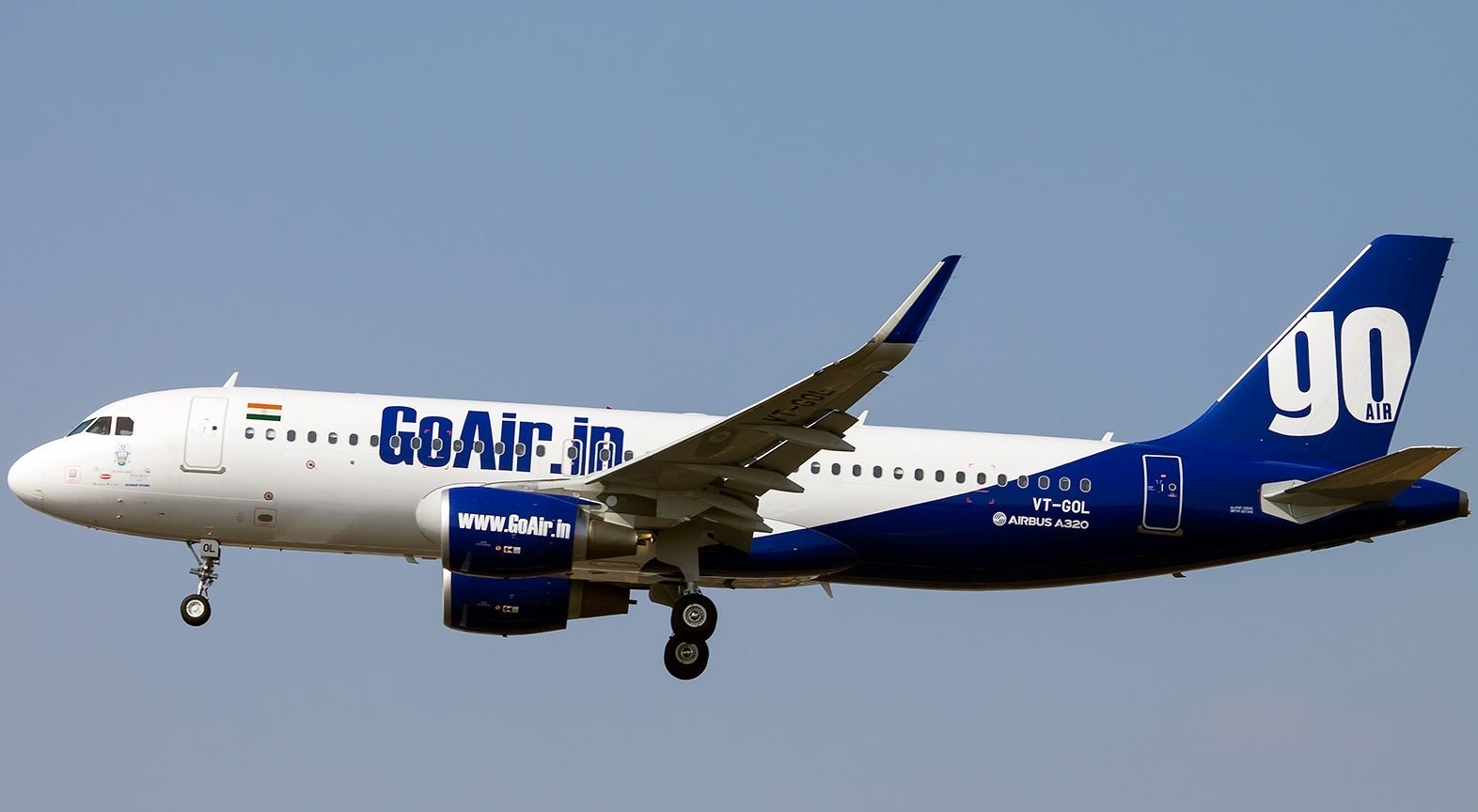
-
 Main AdminA U.S. Marine Corps reserve UH-1Y Huey from Marine Aircraft Group 49 lifts off from a landing zone after dropping off soldiers from the New Jersey Army National Guard's 1-114 Infantry during a joint training exercise on Joint Base McGuire-Dix-Lakehurst, N.J., Jan. 10, 2017. The Marine Corps Reserve provided airlift and close air support to Alpha Company soldiers of 1-114. The 1-114, which is part of the 50th Infantry Brigade Combat Team, is participating in a series of training events that will culminate this summer at an eXportable Combat Training Capability exercise on Fort Pickett, Va. The Army National Guard?s eXportable Combat Training Capability program is an instrumented Brigade field training exercise designed to certify Platoon proficiency in coordination with First Army. (U.S. Air National Guard photo by Tech. Sgt. Matt Hecht/Released)
Main AdminA U.S. Marine Corps reserve UH-1Y Huey from Marine Aircraft Group 49 lifts off from a landing zone after dropping off soldiers from the New Jersey Army National Guard's 1-114 Infantry during a joint training exercise on Joint Base McGuire-Dix-Lakehurst, N.J., Jan. 10, 2017. The Marine Corps Reserve provided airlift and close air support to Alpha Company soldiers of 1-114. The 1-114, which is part of the 50th Infantry Brigade Combat Team, is participating in a series of training events that will culminate this summer at an eXportable Combat Training Capability exercise on Fort Pickett, Va. The Army National Guard?s eXportable Combat Training Capability program is an instrumented Brigade field training exercise designed to certify Platoon proficiency in coordination with First Army. (U.S. Air National Guard photo by Tech. Sgt. Matt Hecht/Released)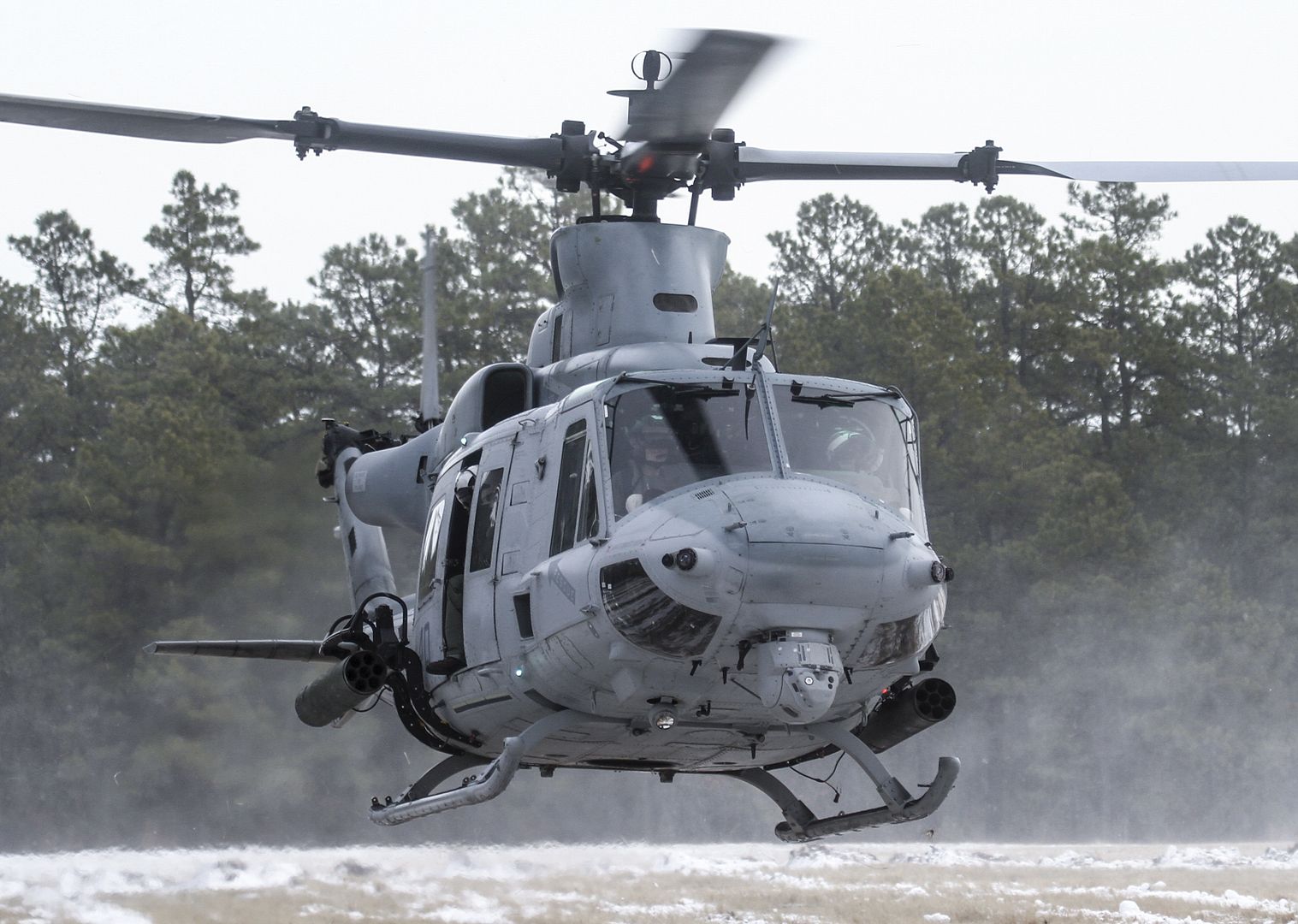
A Marine Corps AH-1Z Super Cobra from Marine Aircraft Group 49 provides close air support to New Jersey Army National Guard soldiers from the 1-114 Infantry during a joint training exercise on Joint Base McGuire-Dix-Lakehurst, N.J., Jan. 10, 2017. The Marine Corps Reserve provided airlift and close air support to Alpha Company soldiers of 1-114. The 1-114, which is part of the 50th Infantry Brigade Combat Team, is participating in a series of training events that will culminate this summer at an eXportable Combat Training Capability exercise on Fort Pickett, Va. The Army National Guard?s eXportable Combat Training Capability program is an instrumented Brigade field training exercise designed to certify Platoon proficiency in coordination with First Army. (U.S. Air National Guard photo by Tech. Sgt. Matt Hecht/Released)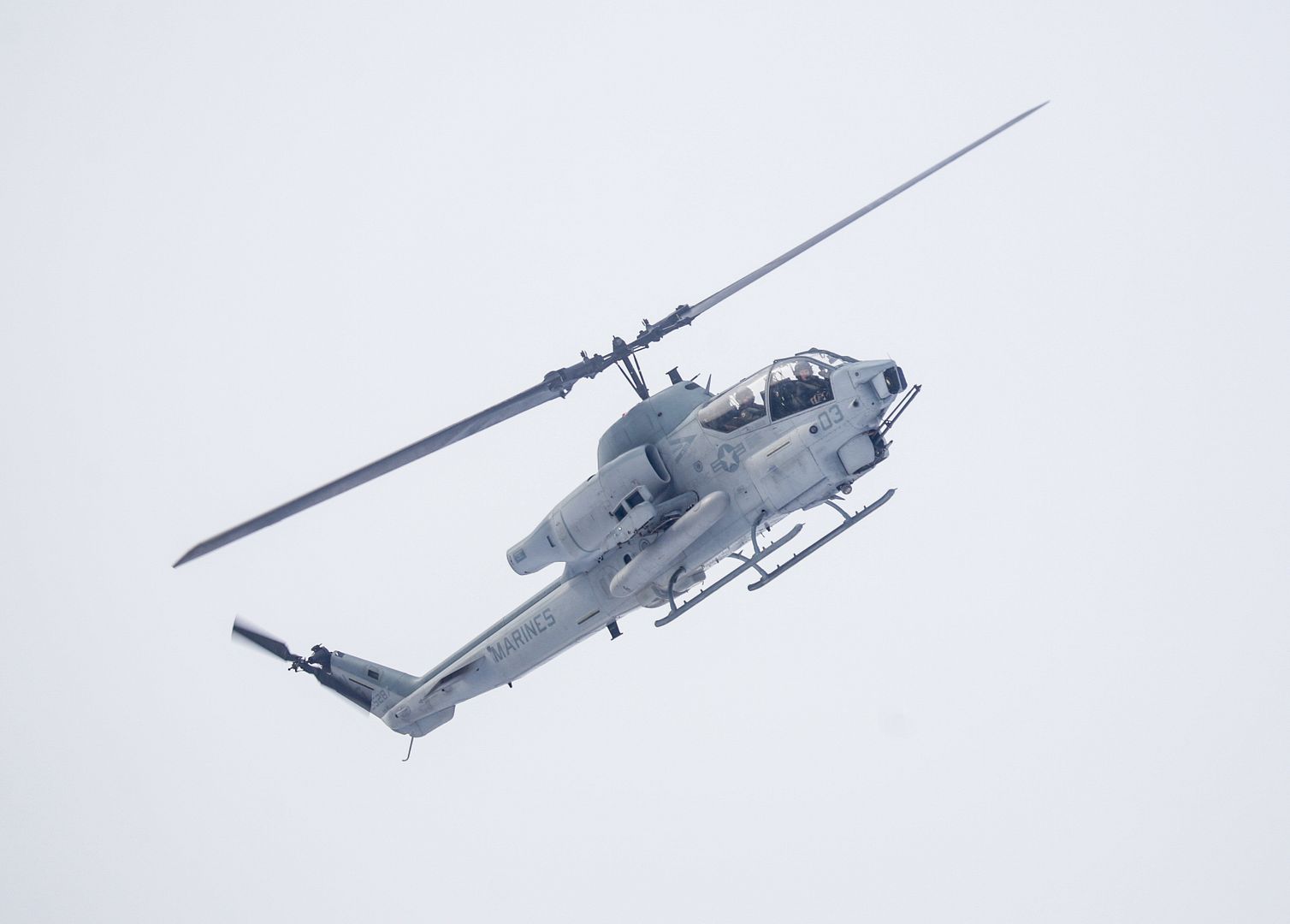
An AH 64D Apache Longbow attack helicopter crew, assigned to 12th Combat Aviation Brigade support the 3rd Squadron,
2nd Cavalry Regiment, initiates its first itinerary during the operation Dire Wolf at 7th Army Training Command?s, Grafenwoehr
Training Area, Bavaria, Germany, Jan. 10, 2017. (U.S. Army photo by Visual Information Specialist Matthias Fruth)
ROBINS AIR FORCE BASE, Ga. --
Take a group of U.S. Air Force C-5 maintainers fresh from a C-17 project. Team them with C-130 maintenance professionals and what do you get?
Success for the U.S. Navy ? in the sky.
Thanks to the partnership of two 402nd Aircraft Maintenance Group squadrons, nine Navy airlifters now have state-of-the-art missile protection.
A project to retrofit Large Aircraft Infrared Countermeasures, or LAIRCM, Advanced Threat Warning Systems onto the Navy C-130Js arrived at the Warner Robins Air Logistics Complex in fiscal year 2016.
It was completed ahead of schedule in early fiscal year 2017 through the combined efforts of the 559th Aircraft Maintenance Squadron, the unit that performs depot-level maintenance, repair and modification for all C-5 aircraft, and the 560th Aircraft Maintenance Squadron, which does the same for the C-130.
LAIRCM is a defensive system for large transport and rotary-wing aircraft that combines a missile-warning system and an infrared laser jammer countermeasure system to protect an aircraft from infrared-guided threat missiles.
The last of the Navy C-130Js that received the LAIRCM retrofit at WR-ALC was flown off the Robins Air Force Base flight line by a Navy aircrew on Dec. 29.
?This was a great partnership between the 559th AMXS and 560th AMXS,? said Jim ?J.R.? Russell, 560th AMXS director. ?We accomplished Gate 1 and Gate 4, while they accomplished Gate 2, the mod work gate, and Gate 3, the outgoing systems ops gate.?
David Johnson, 559th AMXS director, said much recognition is due ?these incredible teams? that got the job done on the Navy LAIRCM workload.
?I am very proud of both teams that worked jointly to provide a critical aircraft system to keep our troops safe,? Johnson said. ?This is the first workload the 559th has produced for a sister service, but we look forward to more in the future as we continue to increase capacity at WR-ALC.?
The 559th used technicians coming off a C-17 LAIRCM modification project that ended in fiscal year 2015. Having workers trained and recently experienced on LAIRCM mods paid big dividends on the speed and quality of the Navy project, Russell said.
Keith ?L.K.? Hamilton, the 559th AMXS team leader for the project, said the Navy LAIRCM job was accomplished at a rate of 4,500 hours per modification. The work was contracted for 90 days, but was produced in an average of 60 days.
The 22-member 559th team worked a three-shift operation responsible for mod installation and operational checks. The 560th team accomplished induction, pressurization and outgoing preflight operations.
The nine aircraft contracted for Robins were all completed ahead of schedule ? seven in fiscal year 2016 and two in early fiscal year 2017. Two more Navy C-130s received the LAIRCM retrofit in conjunction with scheduled programmed depot maintenance at Ogden Air Logistics Complex, Hill Air Force Base, Utah.
Russell said the combined Navy LAIRCM mod team produced all nine aircraft an average of 26 days early to the overall customer requirement date.
?That equates to 231 days of increased aircraft availability for the Navy and Marine warfighters,? he said.
LAIRCM automatically detects a missile launch, determines if it is a threat and activates a high-intensity laser-based countermeasure system to track and defeat the missile, according to information from Northrup Grumman, the corporation that develops and produces the system.
The Robins project stemmed from a Navy requirement to install infrared countermeasures on all U.S. Marine Corps airlift planes. The Navy LAIRCM Advanced Threat Warning System is the latest generation of directed infrared countermeasure systems and traces its origin to the Air Force LAIRCM program.
WR-ALC is not funded for any more Navy LAIRCMs in fiscal year 2017, although there is a potential for up to 40 additional aircraft to be retrofitted by the complex between fiscal years 2017 and 2020.
STRATFORD, Conn., Jan. 11, 2017 /PRNewswire/ -- Sikorsky, a Lockheed Martin company, and its PZL Mielec affiliate will launch a two-month, 13-city tour across seven Caribbean and Latin American countries in early 2017 to demonstrate the short take-off and landing capabilities of the M28 twin turboprop airplane.
[The Sikorsky-PZL Mielec multi-role, all-weather M28 short take-off and landing airplane will tour seven Caribbean and Latin American countries from mid-March to May 2017.]
Flight and ground demonstrations starting mid-March in Trinidad and Tobago will extend to Brazil, Argentina, Ecuador, Colombia, Panama and Mexico though mid-May. The tour will enable commercial operators, government agencies and militaries across the region to assess the performance of the 7,500 kg (16,500 lb.) Polish designed-and-built M28 airplane on short and underdeveloped runways ? and how its 19-passenger cabin with clamshell rear door can be quickly converted for paratroop, cargo and casualty evacuation missions.
"When you have to move people or cargo into short, unpaved or underdeveloped airstrips with austere facilities, and under hot or icing conditions, the M28 twin turboprop airplane is ideally suited for the Caribbean and Latin America," said Adam Schierholz, Sikorsky vice president for Latin America. "We are bringing this reliable and powerful aircraft to show prospective operators its extraordinary short takeoff and landing capabilities, and the many ways to benefit from its exceptional range, payload capacity and multirole flexibility."
With its high-lift wing, thrust-reversing propellers and two 1,100 shp (820 kW) Pratt & Whitney Canada PT6-65B turboprop engines:
the empty M28 aircraft can take off and land on rough airstrips just 345 meters (1,000 ft.) long.
an M28 loaded with a 1,000 kg (2,204 lb.) payload offers a range of 1,592 km (860 nm) distance with safety reserve for 45 minutes of flight; two pilots can take off in the M28 with a full payload of either 19 seated passengers or a maximum 2,300 kg (5,000 lb) of cargo in just 548 meters (1,800 ft.) of runway length, for a range of over 450 kilometers (225 nm).
the 148m3 (485 cu ft.) cabin can be outfitted with a removable roller floor, optional cargo hoist, and heavy cargo restraints to either para drop or load/unload cargo from the full-width aft door.
Sikorsky will invite commercial operators, government organizations, law enforcement agencies and military aviation commanders to observe the M28 in action, and to examine the highly configurable aircraft in a wide variety of operational and logistical roles.
"The M28 is a proven, tough airplane that doesn't need much support to keep flying," said Mariusz Kubryn, M28 chief designer. "It has the highest useful load in its class, and is often preferred to larger platforms because of its multi-mission flexibility and cost-effective performance."
More than 100 M28 aircraft currently operate worldwide in both commercial and military configurations providing passenger transport, parachute training, border patrol and fisheries protection. The aircraft is certified by Brazil's ANAC, and by EASA and the FAA. The U.S. Air Force has used the C-145A variant for air cargo missions for deployed troops in Afghanistan.
The M28 will begin its Latin American tour on March 17, 2017, in Trinidad and Tobago. Access to the aircraft is by invitation only. A website where interested commercial transport operators and government agencies can learn about the tour locations, and register to see the aircraft, will be posted in mid-January 2017. To learn more about the M28 aircraft, please link to www.m28aircraft.pl.
The M28 also will be shown by appointment during the LAAD Defense and Security show in Rio de Janeiro, Brazil (April 4-7).
With decades of supporting Caribbean and Latin American government and military customers, Lockheed Martin is dedicated to meeting the aviation, naval, space, and other needs of the region.
11 January 2017 Press Release
Iran Air has taken delivery of its first new aircraft, an A321, in a handover ceremony in Toulouse with Mr. Farhad Parvaresh, Iran Air Chairman and CEO, and Mr. Fabrice Bregier, President, Airbus Commercial Aircraft and Chief Operating Officer Airbus, in the presence of Gael Meheust, SVP Sales and Marketing CFM, Tom Enders, Airbus Chief Executive Officer, and international media.
The delivery is the first from a firm order placed by Iran Air in December 2016 for 100 Airbus aircraft (46 single aisle and 54 wide-body jets) to renew and expand its fleet.
?This significant milestone marks the first practical step in Iran Air?s ambitious passenger aircraft fleet renewal and its stronger presence in international civil aviation. Iranian travellers can be proud with our selection of the world?s most modern single aisle aircraft,? said Mr Farhad Parvaresh, Iran Air Chairman and CEO. ?Iran Air is delighted with this first Airbus delivery and congratulates everyone involved who made it possible. Today signals that with international collaboration and co-operation, we can achieve mutually beneficial commercial goals.?
?Today is a momentous occasion and I congratulate Iran Air on taking delivery of it first new aircraft in many years. As we take these first steps together, we stand ready to support the development and modernisation of Iran Air,? said Fabrice Bregier, President, Airbus Commercial Aircraft and Chief Operating Officer Airbus. ?Clearly in a country of 80 million people, there is a need for the latest passenger aircraft to meet domestic as well as international demand.
Iran is forecast to require some 400 to 500 new aircraft to modernise as well as to grow its existing passenger fleet to catch up with years of pent up demand on domestic as well as international routes. The latest generation of fuel efficient aircraft will also allow new routes and markets to be exploited.
The delivery complies with all relevant international laws. Airbus coordinated closely with regulators in the EU, US and elsewhere to ensure understanding and full compliance with the Joint Comprehensive Plan Of Action (JCPA). Airbus will continue to act in full compliance with the conditions of the US government Office of Foreign Assets Control (OFAC) licences.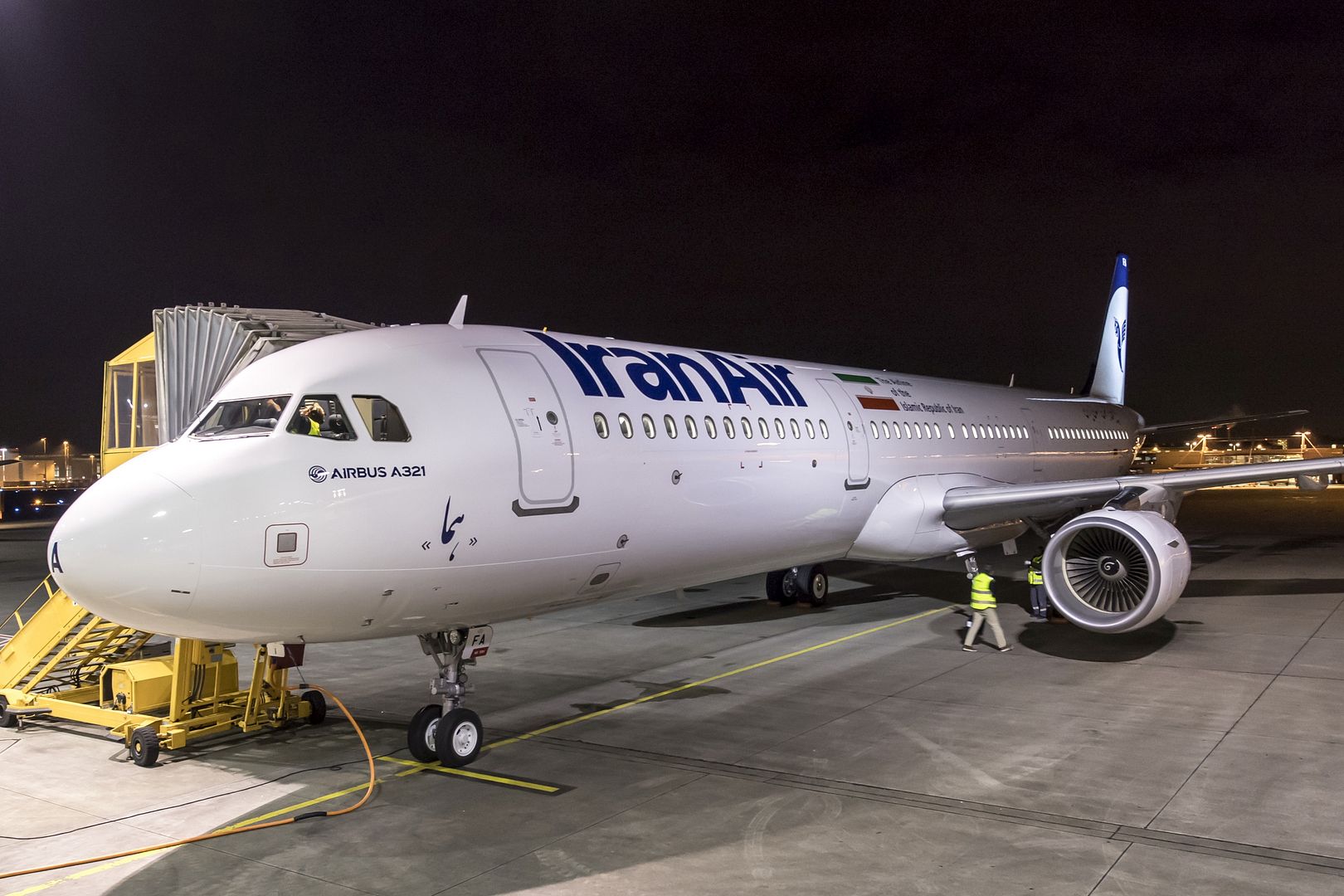
-
 Main AdminA U.S. Air National Guard, F-16 Fighting Falcon at the 138th Fighter Wing, Tulsa, OK, is prepped for night flying, January 11, 2016.
Main AdminA U.S. Air National Guard, F-16 Fighting Falcon at the 138th Fighter Wing, Tulsa, OK, is prepped for night flying, January 11, 2016.
(U.S. Air National Guard photo by Tech. Sgt. Drew A. Egnoske)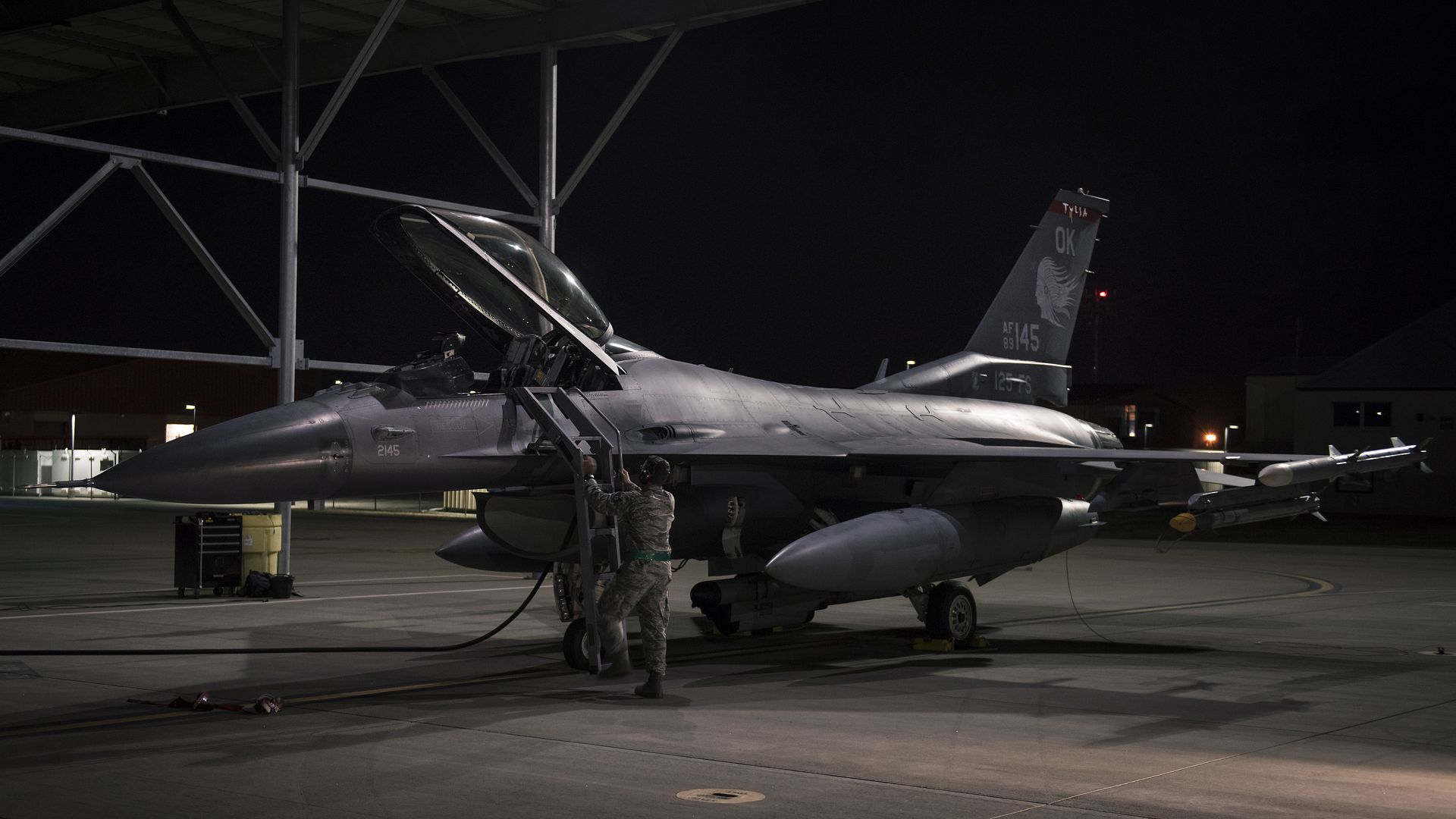
A U.S. Air National Guard, F-16 Fighting Falcon at the 138th Fighter Wing, Tulsa, OK, is prepped for night flying, January 11, 2016, while a full moon rises in the night sky.
(U.S. Air National Guard photo's by Tech. Sgt. Drew A. Egnoske)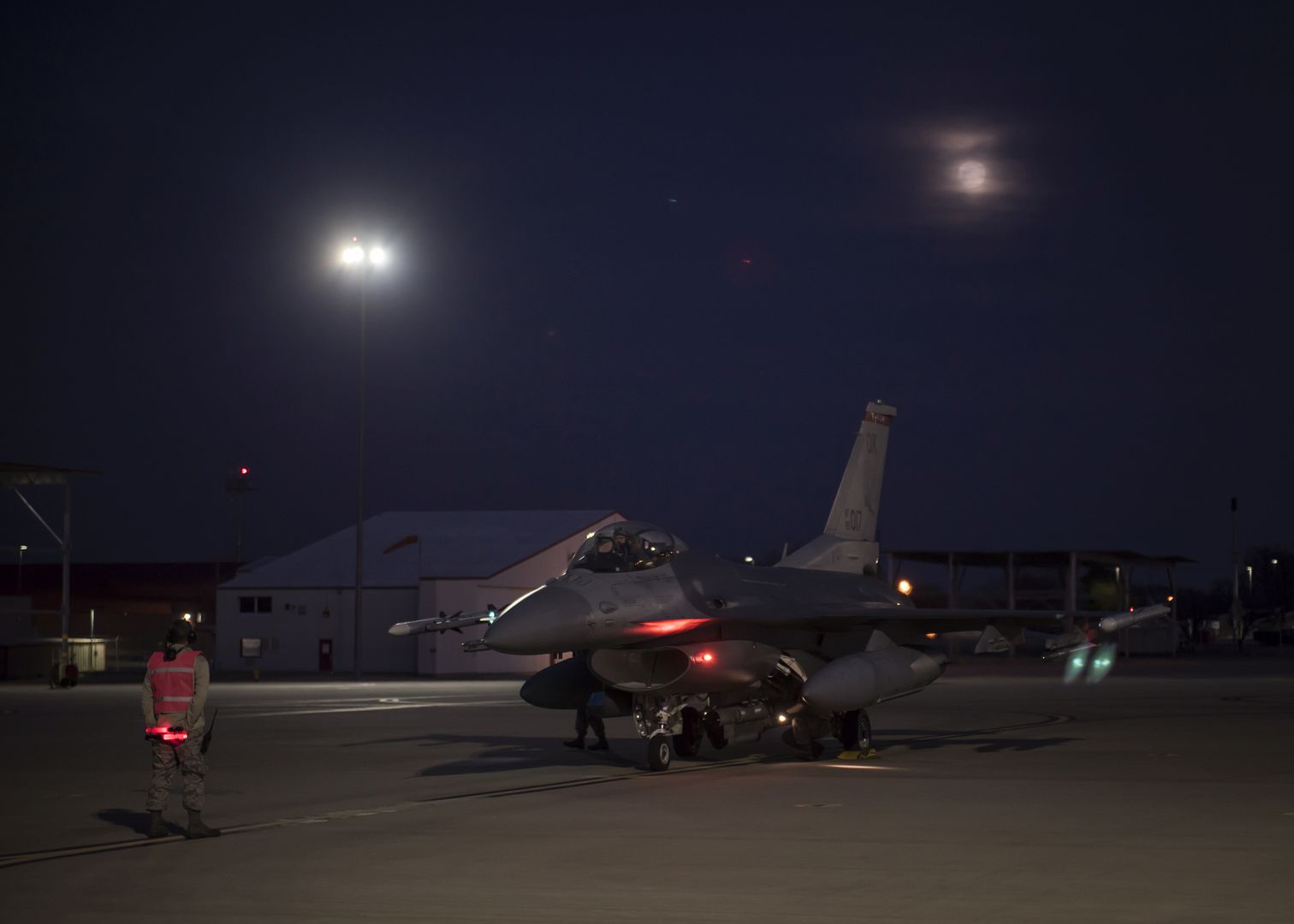
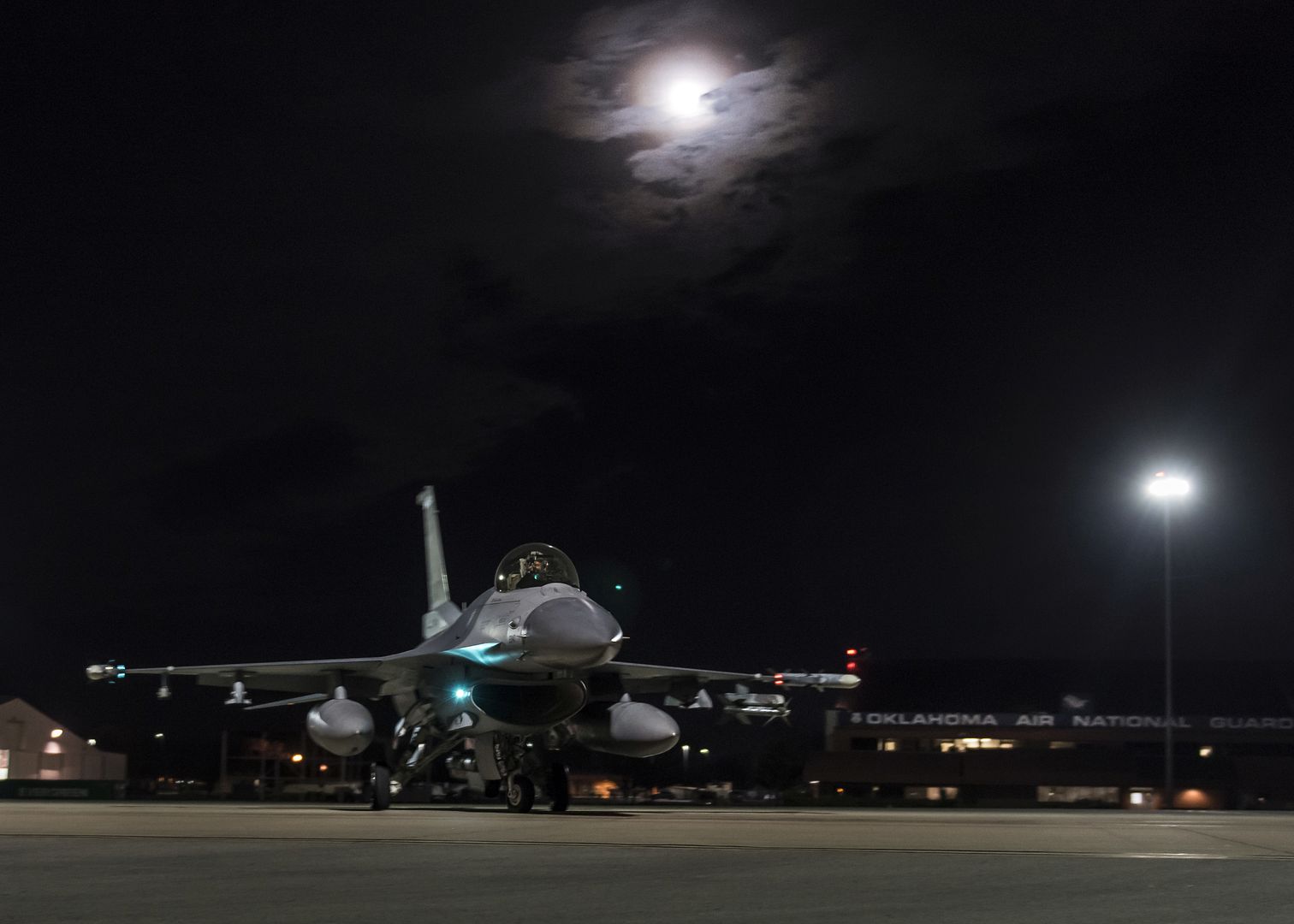
A C-130 Hercules lands at Yokota Air Base, Japan, Jan. 11, 2017, during Jump Week. The 36th Airlift Squadron provided airlift support to the U.S. Marine Corp?s weeklong jump training. (U.S. Air Force photo by Yasuo Osakabe/Released)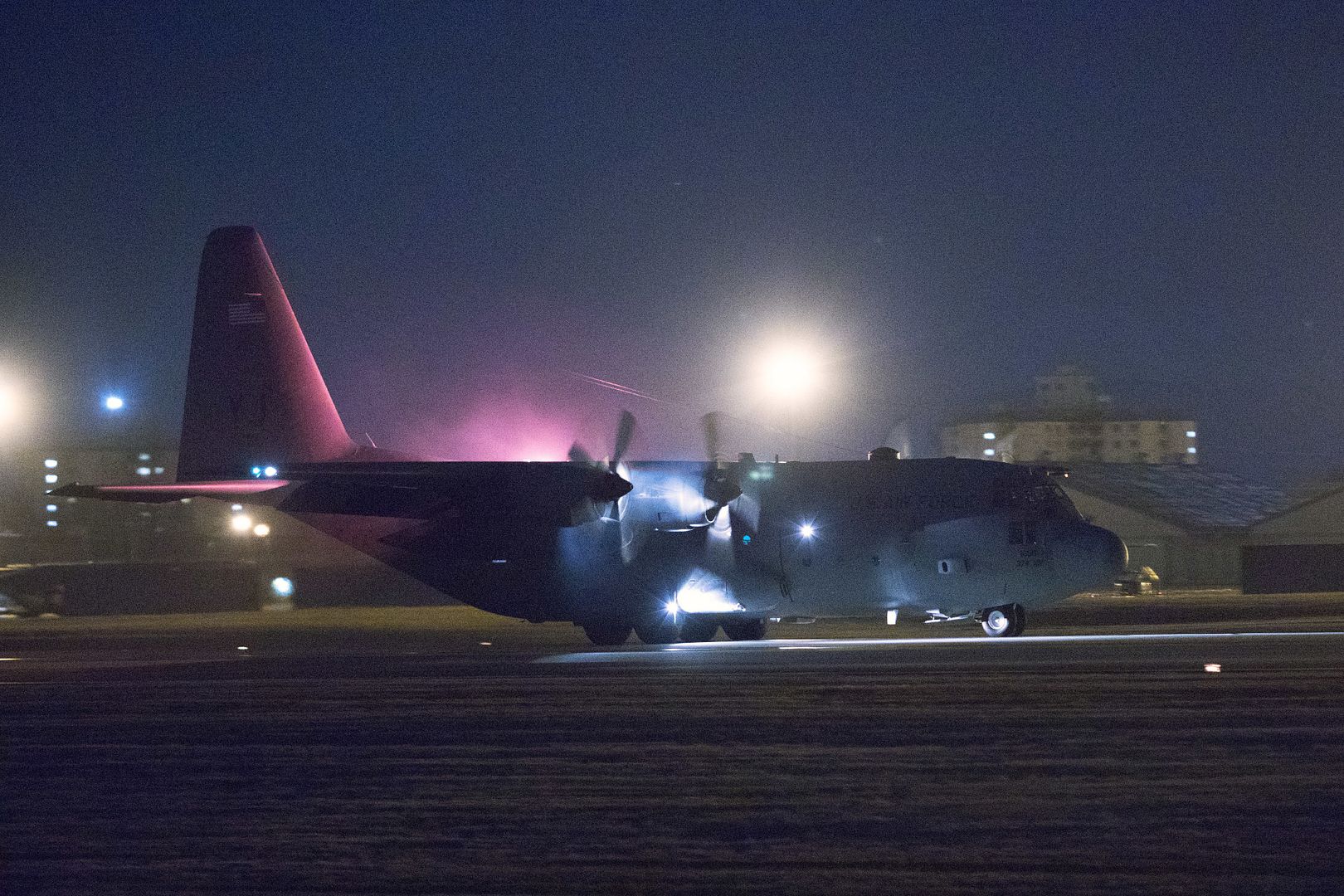
MELBOURNE, Fla. ? Jan. 12, 2017 ? The U.S. Navy?s AN/AES-1 Airborne Laser Mine Detection System, designed and manufactured by Northrop Grumman Corporation (NYSE: NOC), has achieved Initial Operational Capability. ALMDS provides rapid wide-area reconnaissance and assessment of mine threats in sea lanes, littoral zones, confined straits, choke points and amphibious areas of operations.
?With Initial Operational Capability, the ALMDS program has delivered a new and important capability to the Navy and to our nation?the first of its kind for mine warfare,? said Erik Maskelony, assistant program manager, Airborne Laser Mine Detection System, PEO LCS, Mine Warfare Program Office (PMS 495).
The ALMDS system features several capabilities that make it the first of its kind. It leverages a sensor pod to rapidly sweep the water using laser technology. The sensor pod can also be rapidly installed on a medium-lift helicopter and quickly removed after mission completion. This agile system?s detection speed and accuracy will significantly improve the U.S. Navy?s mine detection capabilities and help ensure the safety of service members around the world.
?Using forward motion of the aircraft, ALMDS? pulsed laser light generates 3-D images of the near-surface volume to detect, classify and localize near-surface moored sea mines,? said Mark Skinner, vice president, directed energy, Northrop Grumman. ?Highly accurate in day or night operations, the untethered ALMDS sensor conducts rapid wide-area searches with high accuracy.?
The target data generated by ALMDS is displayed on a console and stored for post-mission analysis. The Navy?s ALMDS installation aboard the MH-60S Seahawk helicopter is mounted on a Bomb Rack Unit 14, which is installed on the Carriage, Stream, Tow, and Recovery System. Northrop Grumman?s self-contained design allows the system to be installed on other aircraft types.
Earlier this year, Northrop Grumman successfully integrated and demonstrated ALMDS on a UH-60M Blackhawk helicopter. The first international sale of ALMDS occurred in 2012 to the Japan Maritime Self Defense Force (JMSDF), and the JMSDF has completed flight qualification testing of ALMDS on an MCH-101 helicopter.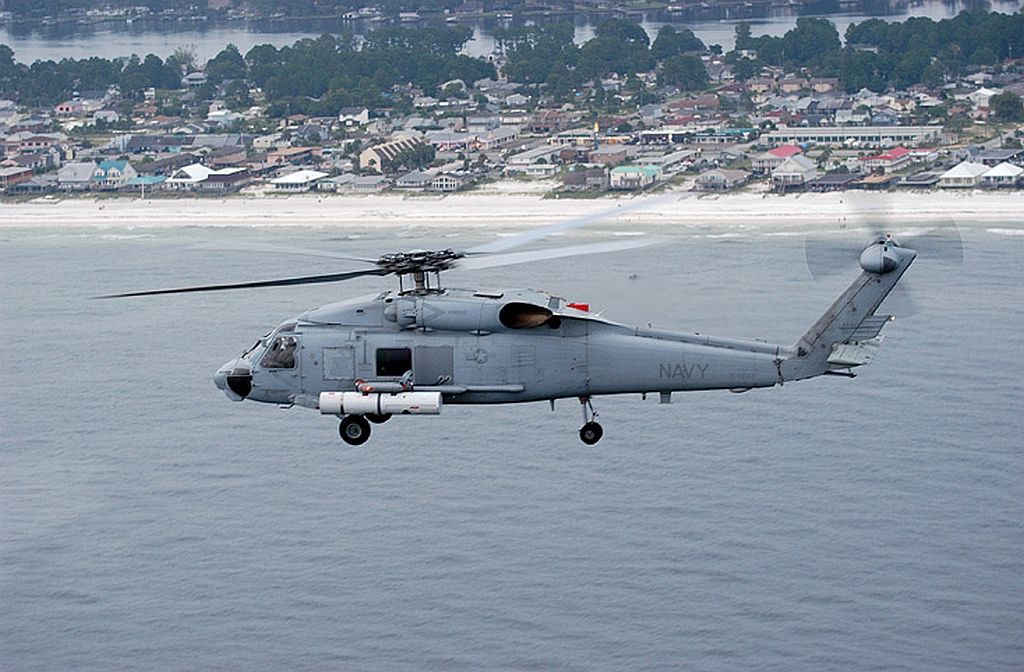
-
 Main AdminA Global Hawk awaits standard maintenance while a heavy fog rolls across the 380th Air Expeditionary Wing flight line at an undisclosed location in Southwest Asia, Jan. 12, 2017. Global Hawks have provided Coalition partners with accurate intelligence necessary for precisely striking important Da?esh facilities and supply routes in support of Combined Joint Task Force-Operation Inherent Resolve. The multi-national Coalition adheres to a very strict targeting process by systematically targeting legitimate military targets including the ISIS command, transport and logistical networks and other critical targets with precision airstrikes which yields precise results.
Main AdminA Global Hawk awaits standard maintenance while a heavy fog rolls across the 380th Air Expeditionary Wing flight line at an undisclosed location in Southwest Asia, Jan. 12, 2017. Global Hawks have provided Coalition partners with accurate intelligence necessary for precisely striking important Da?esh facilities and supply routes in support of Combined Joint Task Force-Operation Inherent Resolve. The multi-national Coalition adheres to a very strict targeting process by systematically targeting legitimate military targets including the ISIS command, transport and logistical networks and other critical targets with precision airstrikes which yields precise results.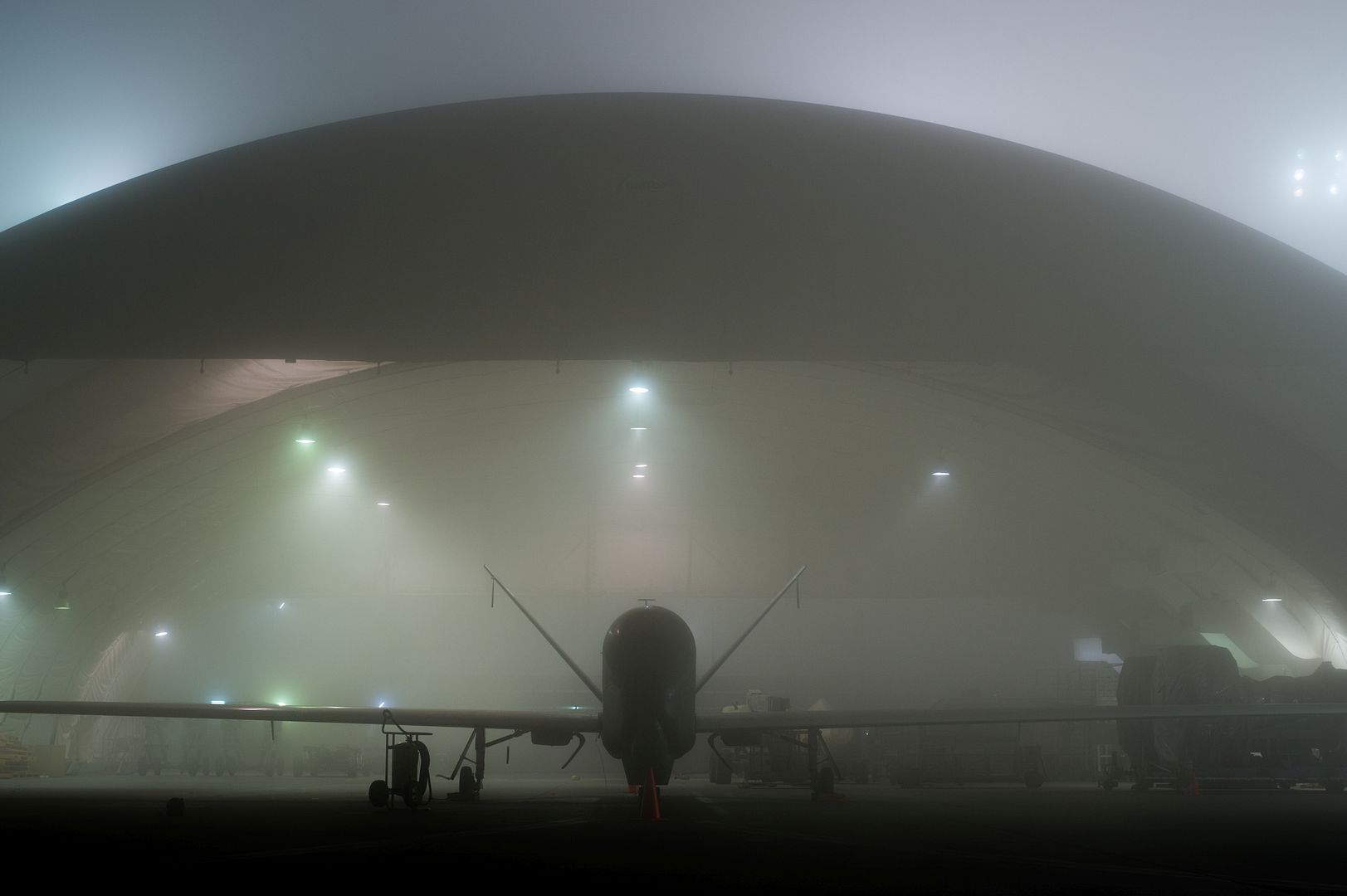
A-10C Thunderbolt IIs taxi to the flightline Jan. 12, 2017, at Moody Air Force Base, Ga. The A-10Cs departed Moody to participate in Green Flag-West. Exercises like Green Flag-West offer pilots the opportunity to train alongside Army and special forces units. (U.S. Photo by Airman 1st Class Janiqua P. Robinson)
An A-10C Thunderbolt II soars through the skies in preparation for Green Flag-West, Jan. 12, 2017, above Moody Air Force Base, Ga. During Green Flag-West, participants will encounter insurgency scenarios, geared specifically toward combating threats from small cell terror groups or more organized groups like the Taliban. (U.S. Photo by Airman 1st Class Janiqua P. Robinson)
A U.S. Air Force F-16 Fighting Falcon approaches to refuel from a 340th Expeditionary Air Refueling Squadron KC-135 Stratotanker over Iraq, Jan. 11, 2017. The 340th EARS extended the fight against Da'esh by delivering fuel to USAF F-16 Fighting Falcons and A-10 Thunderbolt IIs. (U.S. Air Force photo by Senior Airman Jordan Castelan)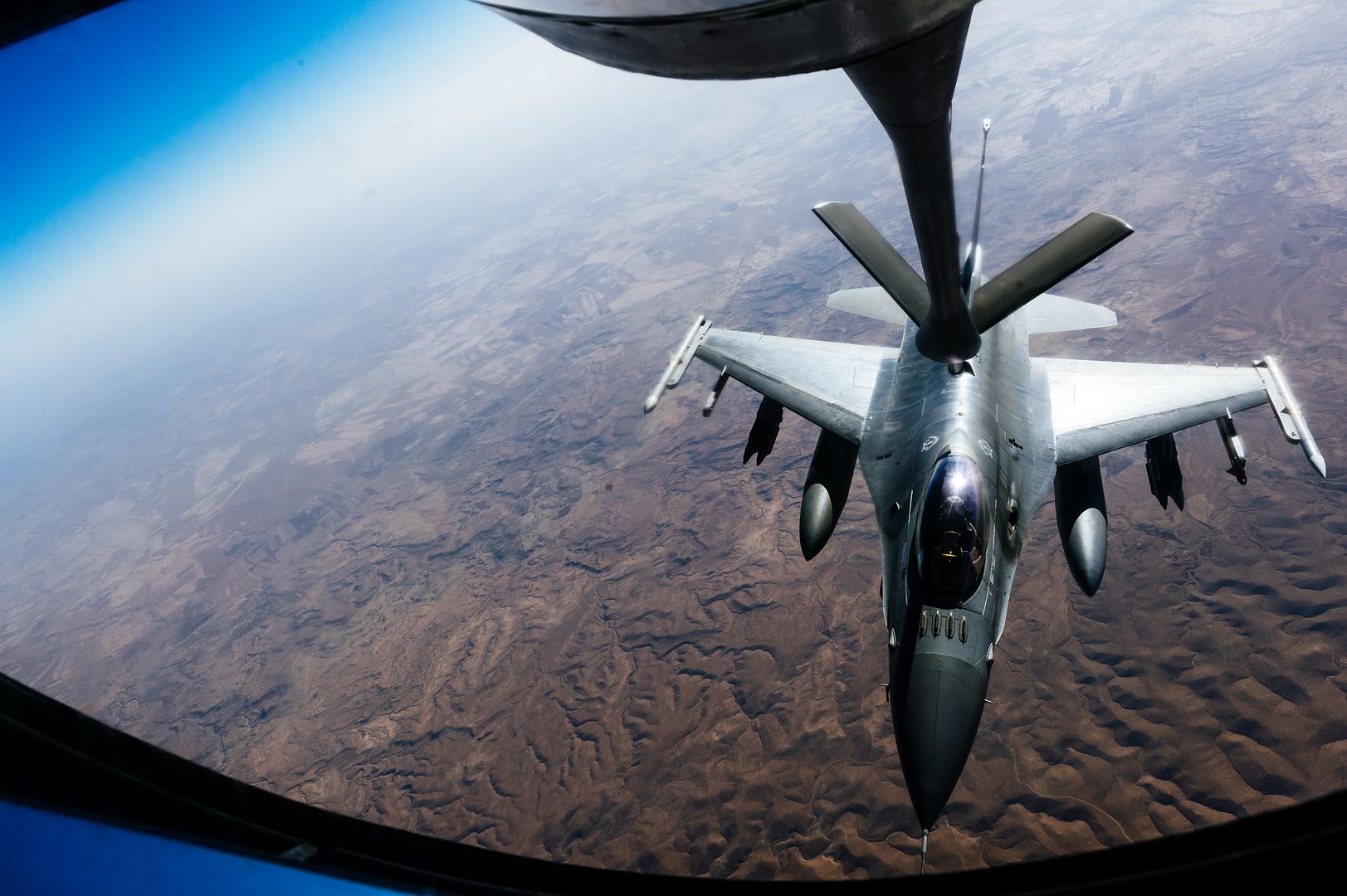
The Secretary of the Navy Ray Mabus rides as a passenger in a TAV-8B Harrier from Marine Attack Training Squadron (VMAT) 203 at Marine Corps Air Station Cherry Point, N.C., Jan. 13, 2017. Mabus visited MCAS Cherry Point for an awards ceremony held for prior service members in the VMAT-203 ready room. (U.S. Marine Corps photo by Lance Cpl. Jered T. Stone)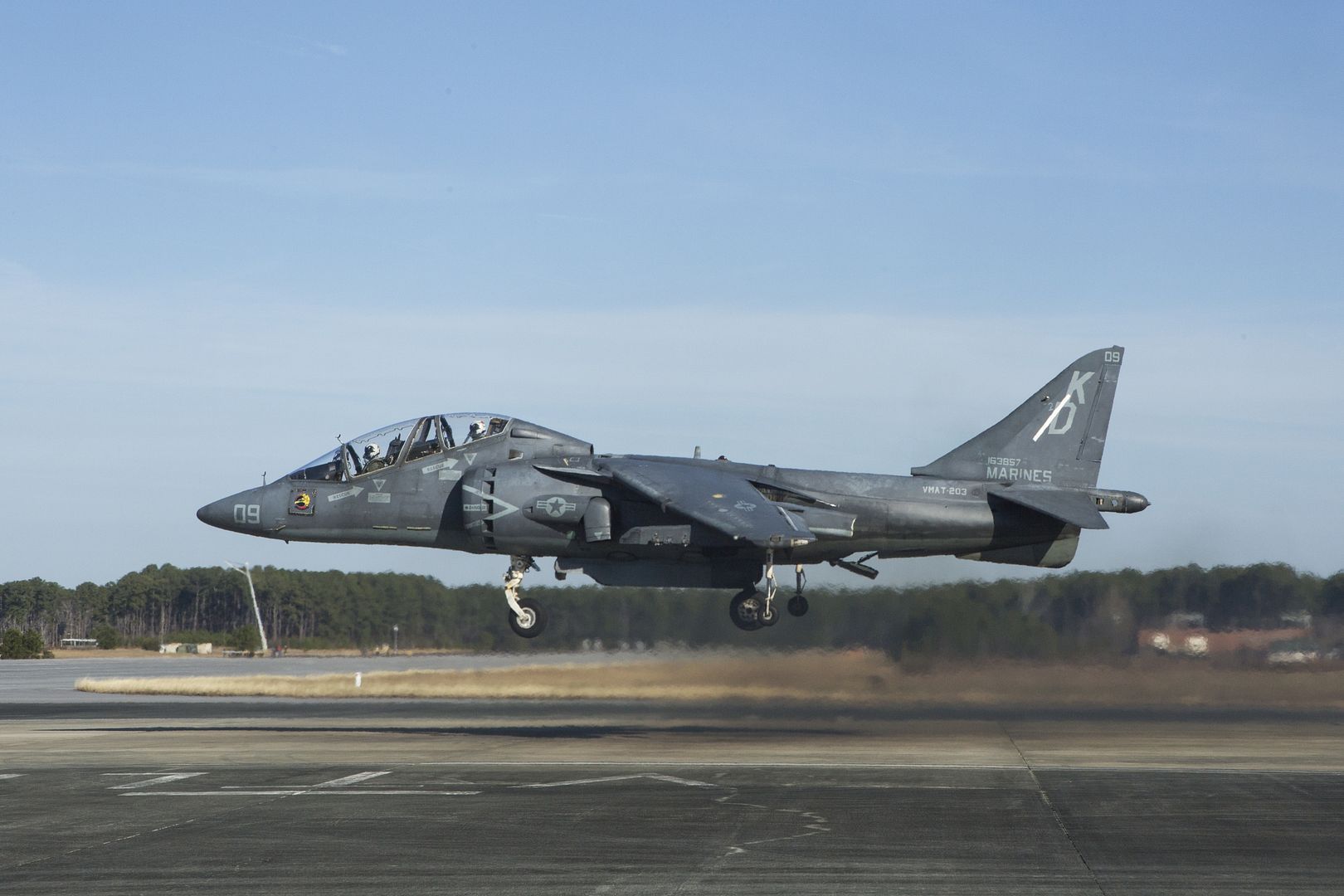
NEW DELHI, Jan. 13, 2017 /PRNewswire/ -- Boeing [NYSE: BA] and SpiceJet announced today a commitment for up to 205 airplanes during an event in New Delhi.
Booked at the end of 2016, the announcement includes 100 new 737 MAX 8s, SpiceJet's current order for 42 MAXs, 13 additional 737 MAXs which were previously attributed to an unidentified customer on Boeing's Orders & Deliveries website, as well as purchase rights for 50 additional airplanes.
"The Boeing 737 class of aircraft has been the backbone of our fleet since SpiceJet began, with its high reliability, low operation economies and comfort," said Ajay Singh, Chairman and Managing Director, SpiceJet. "With the next generation of 737 and the 737 MAX we are sure that we can be competitive and grow profitably."
SpiceJet, all-Boeing jet operator, placed its first order with Boeing in 2005 for Next-Generation (NG) 737s and currently operates 32 737 NGs in its fleet.
"We are honored to build upon more than a decade of partnership with SpiceJet with their commitment of up to 205 airplanes," said Ray Conner, Vice Chairman, The Boeing Company. "The economics of the 737 MAXs will allow SpiceJet to profitably open new markets, expand connectivity within India and beyond, and offer their customers a superior passenger experience."
The 737 MAX incorporates the latest technology CFM International LEAP-1B engines, Advanced Technology winglets and other improvements to deliver the highest efficiency, reliability and passenger comfort in the single-aisle market.
The new airplane will deliver 20 percent lower fuel use than the first Next-Generation 737s and the lowest operating costs in its class ? 8 percent per seat less than its nearest competitor.
-
 Main AdminATLANTIC OCEAN (Jan. 14, 2017) An AV-8B Harrier aircraft launches from the flight deck of the amphibious assault ship USS Bataan (LHD 5). The ship is underway conducting Composite Training Unit Exercise (COMPTUEX) with the Bataan Amphibious Ready Group in preparation for an upcoming deployment. (U.S. Navy photo by Mass Communication Specialist 3rd Class Evan Thompson/Released)
Main AdminATLANTIC OCEAN (Jan. 14, 2017) An AV-8B Harrier aircraft launches from the flight deck of the amphibious assault ship USS Bataan (LHD 5). The ship is underway conducting Composite Training Unit Exercise (COMPTUEX) with the Bataan Amphibious Ready Group in preparation for an upcoming deployment. (U.S. Navy photo by Mass Communication Specialist 3rd Class Evan Thompson/Released)
Dublin, Ireland, January 16, 2017 ? Embraer has signed a contract with Wider?e, the largest regional airline in Scandinavia, for up to 15 E2 family jets. The contract consists of three firm orders for the E190-E2 and purchase rights for 12 further E2 family aircraft. This flexible mix of pur???chase rights for E175-E2, E190-E2, and E195-E2 will give Wider?e the ability to grow their fleet with a family of aircraft from 80 to 130+ seats, to right size capacity to meet market requirements.
The order has a potential list price value of up to US$873million, if all orders are converted. The three firm orders for E190-E2s were included in Embraer?s fourth quarter 2016 backlog.
?It?s always an important moment for Embraer when we add a new airline to our family of operators. It?s even better to be part of a step change in that customer?s operations - our next generation E190-E2s will also be the first jets in Wider?e?s fleet. The opportunities for both Embraer and Wider?e as the airline seeks to expand and move beyond only turboprop operations, present an exciting future. A great way to start 2017?, said Arjan Meijer, Chief Commercial Officer, Embraer Commercial Aviation.
Wider?e will configure the E190-E2s in a comfortable single-class layout with 114 seats. Deliveries are scheduled for 2018. This deal brings the E-Jets E2 backlog to 275 firm orders plus Letters of Intent, options and purchase rights covering another 415 aircraft giving a total of 690 commitments from airlines and leasing companies.
Stein Nilsen, Chief Executive Officer of Wider?e, said, "Our decision to choose the Embraer family of next generation E2 aircraft for our move into jet operations is based on the need for a high quality passenger experience, ease and flexibility of operations, and lowest through life costs. The result of our evaluation determined the E2 family of aircraft, coupled with Embraer's world class customer support, as the best solution for our airline. We're excited at the prospect of being among the first operators of Embraer's next generation of aircraft, which feature significant environmental improvements in both noise and fuel efficiency while still improving performance. The flexibility offered by Embraer's family of same type rated E2 aircraft will enable us to build a right sized fleet, as a supplement to our existing fleet, in accordance with market requirements."
Embraer is the world?s leading manufacturer of commercial jets with up to 130+ seats. The Company has 100 customers from all over the world operating the ERJ and the E-Jet families of aircraft. For the E-Jets program alone, Embraer has logged more than 1,700 orders and over 1,300 deliveries, redefining the traditional concept of regional aircraft by operating across a range of business applications.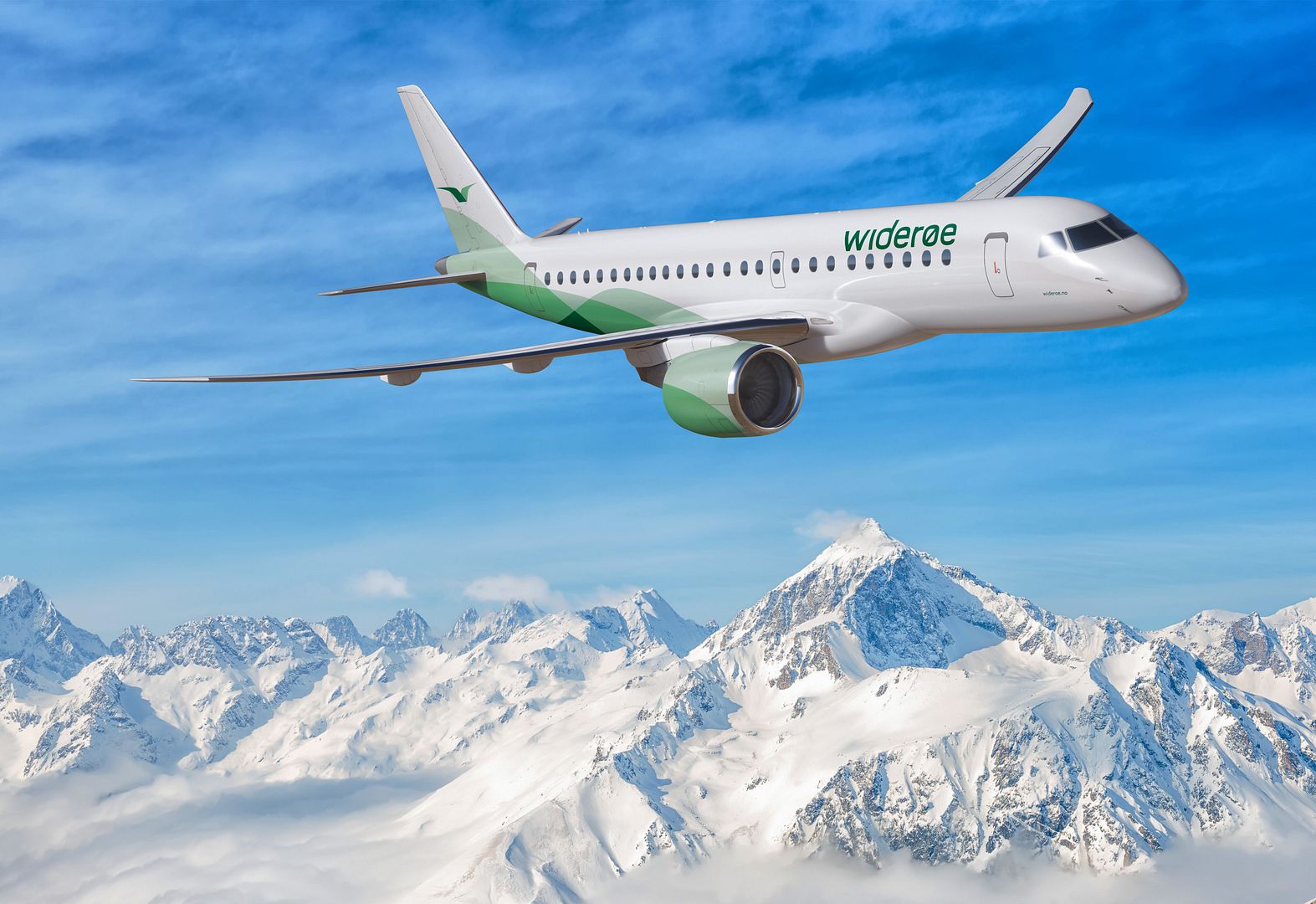
-
 Main AdminPORTLAND AIR NATIONAL GUARD BASE, Ore. -- For members of the 142nd Maintenance Group's Non Destructive Laboratory (NDI) shop, performing Individual Aircraft Tracking (IAT) inspections keeps the F-15C fleet at the top of their game.
Main AdminPORTLAND AIR NATIONAL GUARD BASE, Ore. -- For members of the 142nd Maintenance Group's Non Destructive Laboratory (NDI) shop, performing Individual Aircraft Tracking (IAT) inspections keeps the F-15C fleet at the top of their game.
Depending on the determined life expectancy of specific parts, inspections are scheduled on an hourly and/or calendar basis. When an IAT inspection is performed, it is tracked, documented, and a determination is made regarding the next inspection period. If a crack is discovered, the location and orientation is determined, the information is then sent to Robins Air Force Base engineering to provide a disposition regarding repairs that might be required.
In some cases engineers recommend monitoring the defect rather than repairing. This was not the case for the 142nd Fighter Wing's F-15C Eagle, Aircraft 78-0482, she required a new wing.
"NDI discovered a crack about a month ago while performing the scheduled IAT inspection. After receiving a disposition back, we contacted depot immediately," said Colonel Christopher Lantagne, 142nd Maintenance Group commander. "We were happy to hear that a wing and the Depot Field Team (DFT) were coming between the holidays, something that from my experience is difficult to get."
Immediately the 142nd Maintenance Squadron Structural shop worked with the engineering disposition and with Robins Air Force Base engineers to come up with a replacement plan. Several members of the 142nd Maintenance Group including crew chiefs and back shop specialists immediately got to work, and prepared the wing to be removed prior to the arrival of the DFT, who would be performing the swap.
The DFT from the 402nd Aircraft Maintenance Group, Robins Air Force Base, Ga., arrived in record time with the new wing and seven mechanics, consisting of crew chiefs, aircraft sheet metal, aircraft fuel system, and aircraft electrical/environmental system specialists.
The mission of the 402nd Aircraft Maintenance Group is to provide Programmed Depot Maintenance and unscheduled repair activities on F-15, C-130, C-5 and C-17 aircraft. They are responsible for the repair, modification, reclamation and rework of more than 200 aircraft worldwide. In addition, they prepare and deploy combat Aircraft Battle Damage Repair, crash recovery, supply and transportation teams worldwide.
"It was remarkable how quickly depot was able to get a replacement wing and DFT to us, especially considering the holiday season. On the first day of the team arrival, the wing was off and on the second day the new wing was on," Lantagne stated.
A normal F-15C wing change can take 10 to 12 work days. The DFT performed this change in seven days, cutting the aircraft down-time by at least three days and reducing man-hours from 672 hours to 528 hours.
Lantagne also remarked, "With aircraft availability always being a limiting factor in production, structural fatigue is a major concern. Our maintainers identified a crack in the wing, which immediately grounded the jet. Normally it would take six to nine months of down-time to get it repaired. Because of the professional Airmen of the 142nd Maintenance Group, who were responsible for identifying and communicating our immediate needs, and the cooperation and teamwork of the DFT, this jet was only down about a month."
Thanks to the dedication of the 142nd Maintenance Group, and the 402nd Depot Field Team, F-15 Eagle 78-0482, started the New Year in flight from the Portland Air National Guard Base, Ore., Jan. 3, 2017.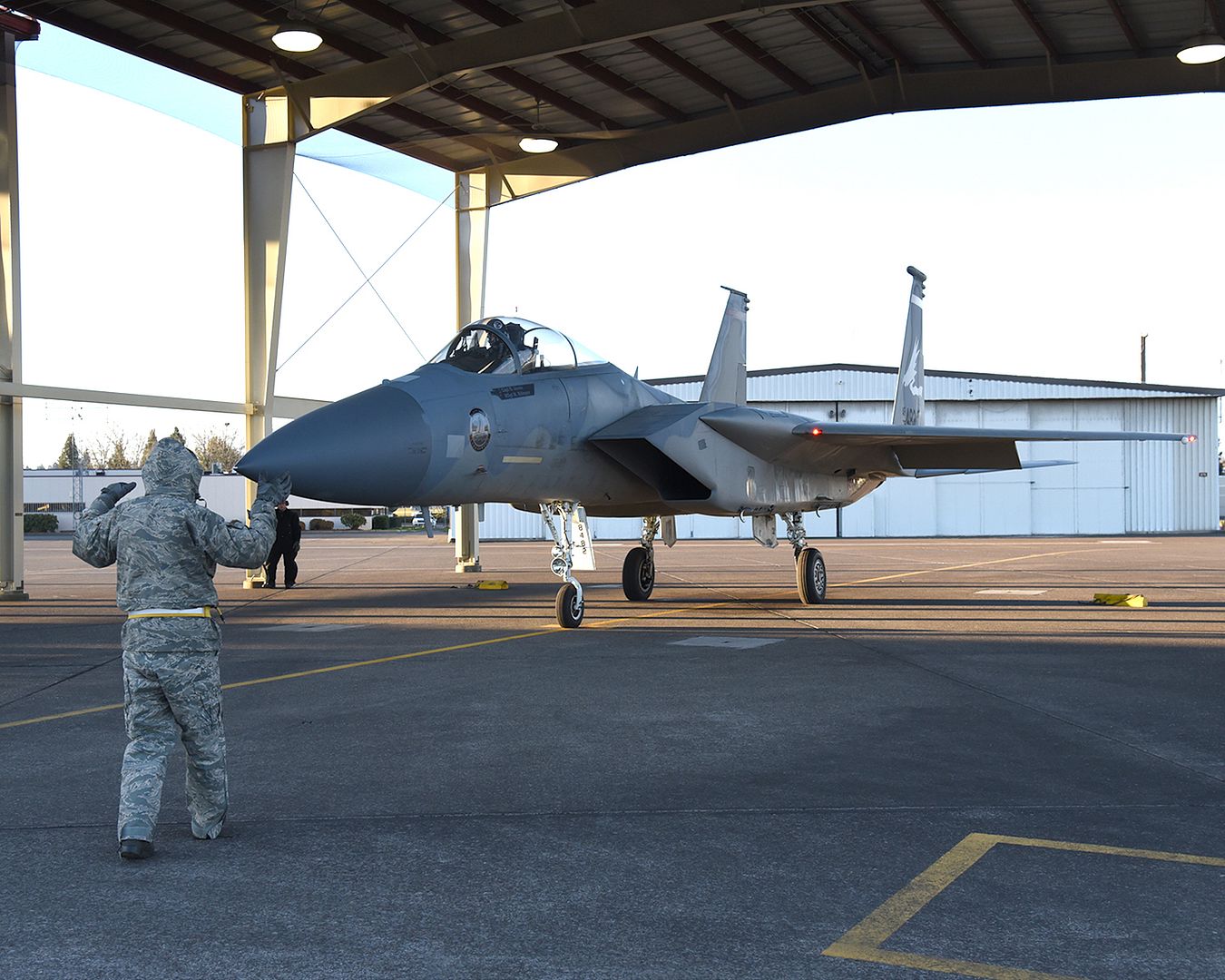
16 January 2017 Press Release
Flynas, Saudi Arabia?s leading low-cost carrier, has signed an agreement with Airbus for 60 A320neo Family aircraft.
In addition to the 60 aircraft, Flynas has converted 20 A320ceo from a previous order to A320neo bringing the airline?s total firm order to 80 A320neo. The deliveries are scheduled to take place during 2018-2026.
The agreement was announced today in Riyadh at a press conference attended by Ayed Al Jeaid, Chairman, NAS Holding, Bander Al Mohanna, Chief Executive Officer, NAS Holding Group and Fouad Attar, Managing Director, Airbus Middle East.
Flynas, an all Airbus operator, currently has 26 A320ceo in service. Launched in 2007, the airline has successfully operated over 260,000 flights and carried more than 30 million passengers in the last ten years.
Ayed Al Jeaid, Chairman, NAS Holding Group said, ?Flynas has come a long way to establish itself as a highly reputed airline in Saudi Arabia. With the introduction of the new aircraft technology, we are confident of our ability to provide best services to our customers. We also look forward to being the first airline in the Kingdom to be successfully listed on the Saudi Stock exchange, which will offer equity ownership to the public and be a part of a great journey.?
Bander Al Mohanna, Chief Executive Officer, NAS Holding Group said, ?We have operated exceptionally well with our existing Airbus A320 fleet, which has allowed us to maintain high performance standards in operations and passenger experience. We have an ambitious growth vision and the new A320neo order will further support our plans to be a leading low-cost carrier with the most advanced and efficient technology and will allow us to strengthen our offerings within and outside of Saudi Arabia.?
In 2016, Flynas set a new record by carrying 6.3 million passengers contributing to a 14% year-on-year increase. The A320neo will provide Flynas unbeatable efficiency and comfort in both high-density domestic segments as well as thinner routes.
?The additional A320neo aircraft will continue to support Flynas? growth plans as a leading low-cost carrier in Saudi Arabia?s fast-growing aviation sector,? said John Leahy, Chief Operating Officer - Customers, Airbus. Today?s agreement further consolidates the aircraft?s popularity that has been endorsed by operators worldwide. The aircraft will offer a unique combination of unbeatable economics, fuel and cost efficiency and outstanding passenger comfort.?
The A320neo Family is the world?s best-selling single aisle aircraft with more than 5,000 orders from 90 customers since its launch in 2010. It incorporates latest technologies including new generation engines and Sharklet wing tip devices, which together deliver more than 15 percent in fuel savings from day one and 20 percent by 2020 with further cabin innovations. The A320neo also offers significant environmental performance with nearly 50 percent reduction in noise footprint compared to previous generation aircraft.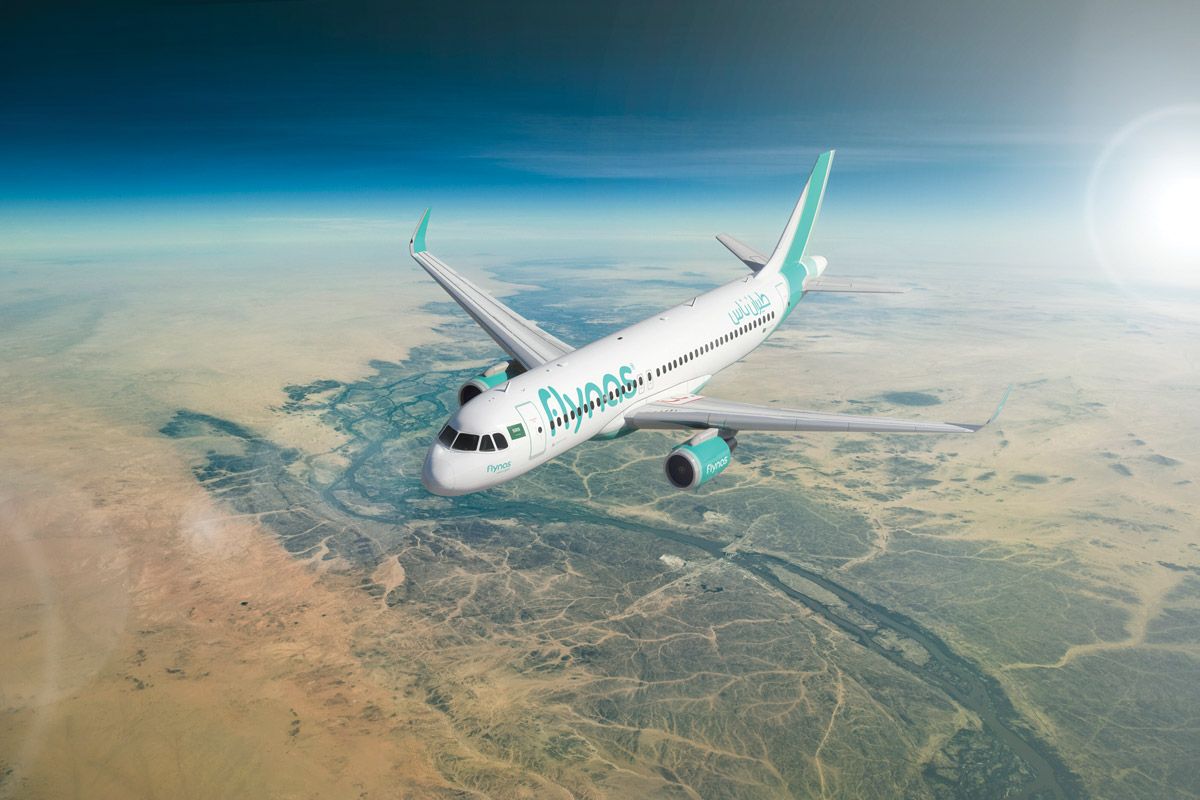
January 16, 2017 Montr?al Commercial Aircraft, Press Release
Bombardier Commercial Aircraft Asset Management announced today the successful remarketing of 13 previously owned CRJ900 aircraft to Regional One. Two of the aircraft were owned by Bombardier and eleven were remarketed on behalf of a third party. Eight of the 13 aircraft were delivered in 2016 and one in 2017. The remaining four are scheduled for delivery later this year.
The sale of the aircraft to Regional One also provides the opportunity for Regional One to acquire additional previously owned aircraft, under certain terms and conditions, made available by Bombardier Commercial Aircraft Asset Management and further develops the relationship between the parties.
Based in Miami, Regional One is a purchaser, lessor and seller of aircraft, aircraft parts, engines, engine parts and other related support items for regional/commuter aircraft worldwide.
About CRJ Series Aircraft
Every 10 seconds a CRJ Series regional jet takes off somewhere in the world. The CRJ Series family of aircraft has transported almost 1.6 billion passengers to become the world?s most successful regional jet program -- linking people and communities like no other. The CRJ Series regional jets have revolutionized aviation with their proven efficiency, reliability and profitability. The CRJ Series aircraft family includes over 100 owners and operators in approximately 40 countries and the worldwide fleet has logged over 43.5 million flight hours.
Bombardier has booked a total of 1,902 firm orders for CRJ Series aircraft, including 428 CRJ900 aircraft.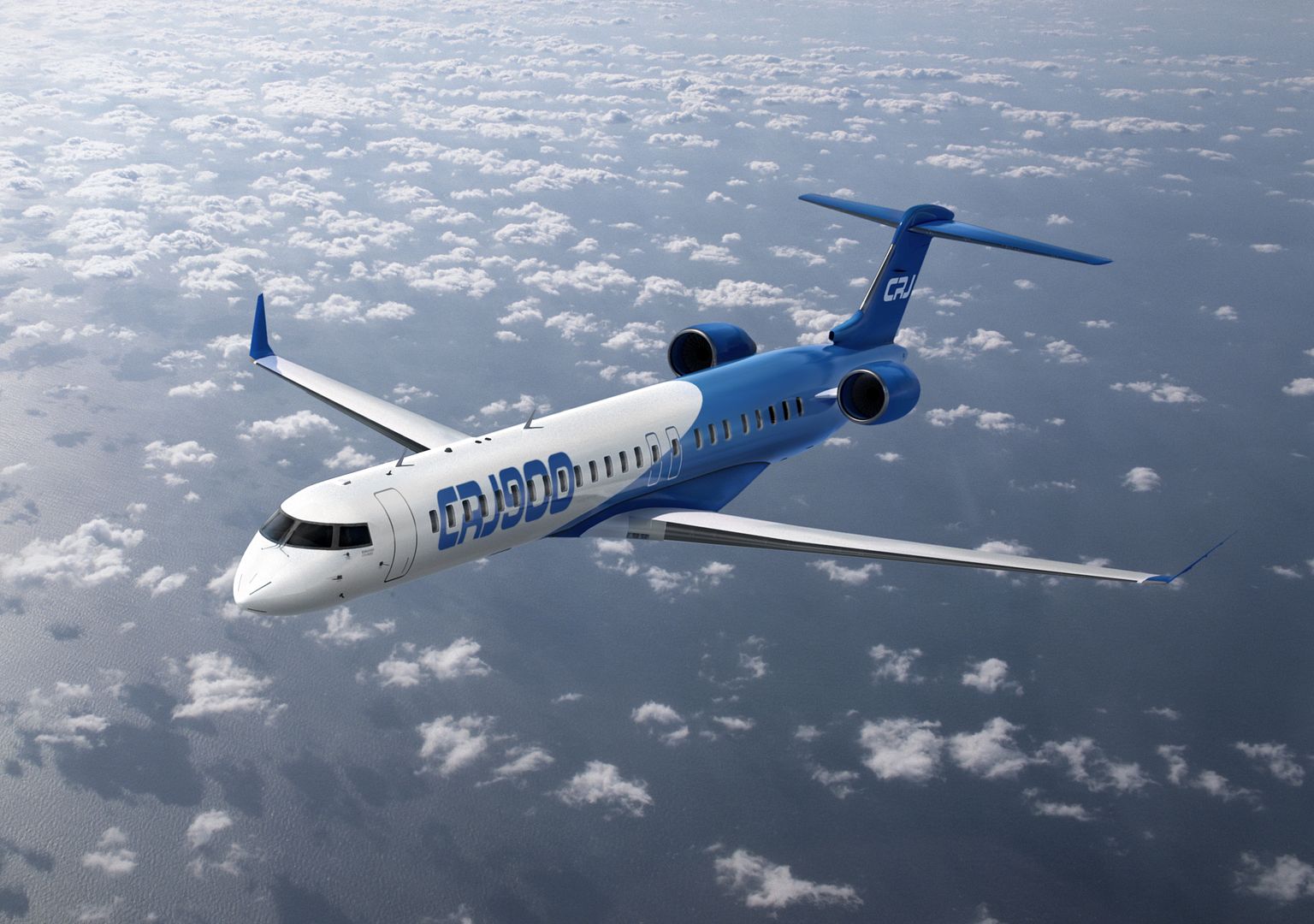
BAE Systems has been selected by Lockheed Martin to modernize the F-22 Raptor?s head-up display (HUD) for the U.S. Air Force, replacing it with a completely digital version.
Under terms of the contract, BAE Systems will use its advanced Digital Light Engine (DLE) technology to implement a form, fit, and function HUD solution that integrates seamlessly into the F-22?s existing HUD space. The company then anticipates receiving a follow-on production contract to retrofit the F-22 fleet?s current HUDs with the modern DLE solution.
?The F-22 is a premier fighter aircraft of the U.S. Air Force, and its pilots deserve the most advanced situational awareness technology available today,? said Andy Humphries, director of Advanced Displays at BAE Systems. ?We?ve worked closely with Lockheed Martin to deliver a completely modernized HUD solution for the F-22 fleet that meets the long-term needs of the Air Force.?
The DLE package is compatible with any existing aircraft interface. Designed for mission effectiveness, the upgrade removes the conventional cathode ray tube image source and introduces a more advanced digital display solution. The digital technology offers increased reliability, eliminates high-maintenance and obsolete items, and provides a constant luminance performance.
?This new F-22 head-up display is a great example of how the F-22 industry team is integrating innovative technologies into the combat Raptor fleet,? said Ken Merchant, vice president of the F-22 program at Lockheed Martin. ?This directly supports our ongoing efforts to deliver affordable and reliable new capabilities to our Air Force customer and warfighters.?
BAE Systems has been a leader in HUD development and production for more than 50 years, a position gained through continuous investment in technology and innovation. The company has produced more than 15,000 head-up displays that have been in service on more than 50 different aircraft types in more than 50 countries around the world. BAE Systems? displays perform on some of the most advanced and demanding military aircraft around the world.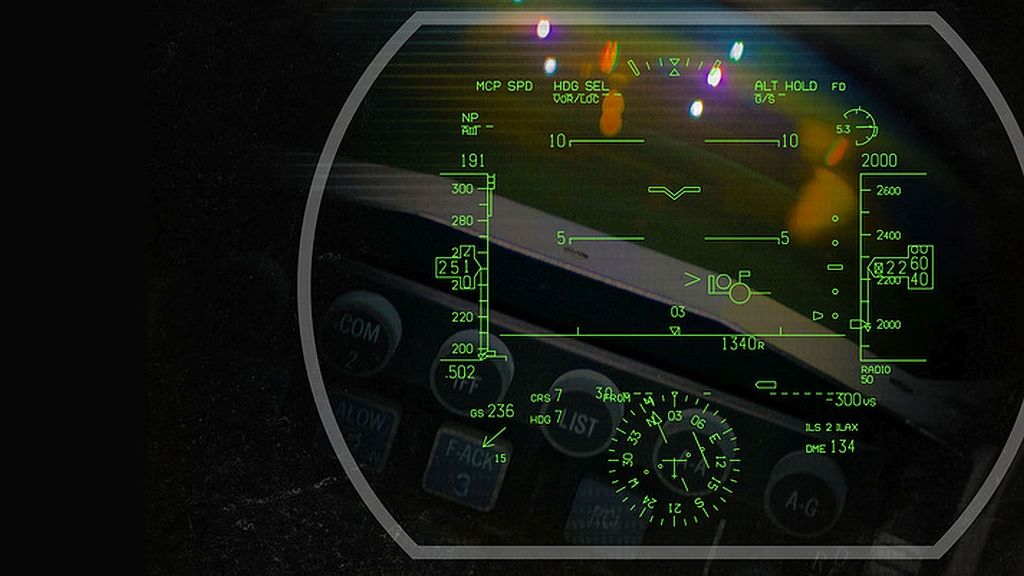
Post a reply
- Go to Next topic
- Go to Welcome
- Go to Introduce Yourself
- Go to General Discussion
- Go to Screenshots, Images and Videos
- Go to Off topic
- Go to Works in Progress
- Go to Skinning Tips / Tutorials
- Go to Skin Requests
- Go to IJAAF Library
- Go to Luftwaffe Library
- Go to RAF Library
- Go to USAAF / USN Library
- Go to Misc Library
- Go to The Ops Room
- Go to Made in Germany
- Go to Campaigns and Missions
- Go to Works in Progress
- Go to Juri's Air-Raid Shelter
- Go to Campaigns and Missions
- Go to Works in Progress
- Go to Skinpacks
- Go to External Projects Discussion
- Go to Books & Resources
